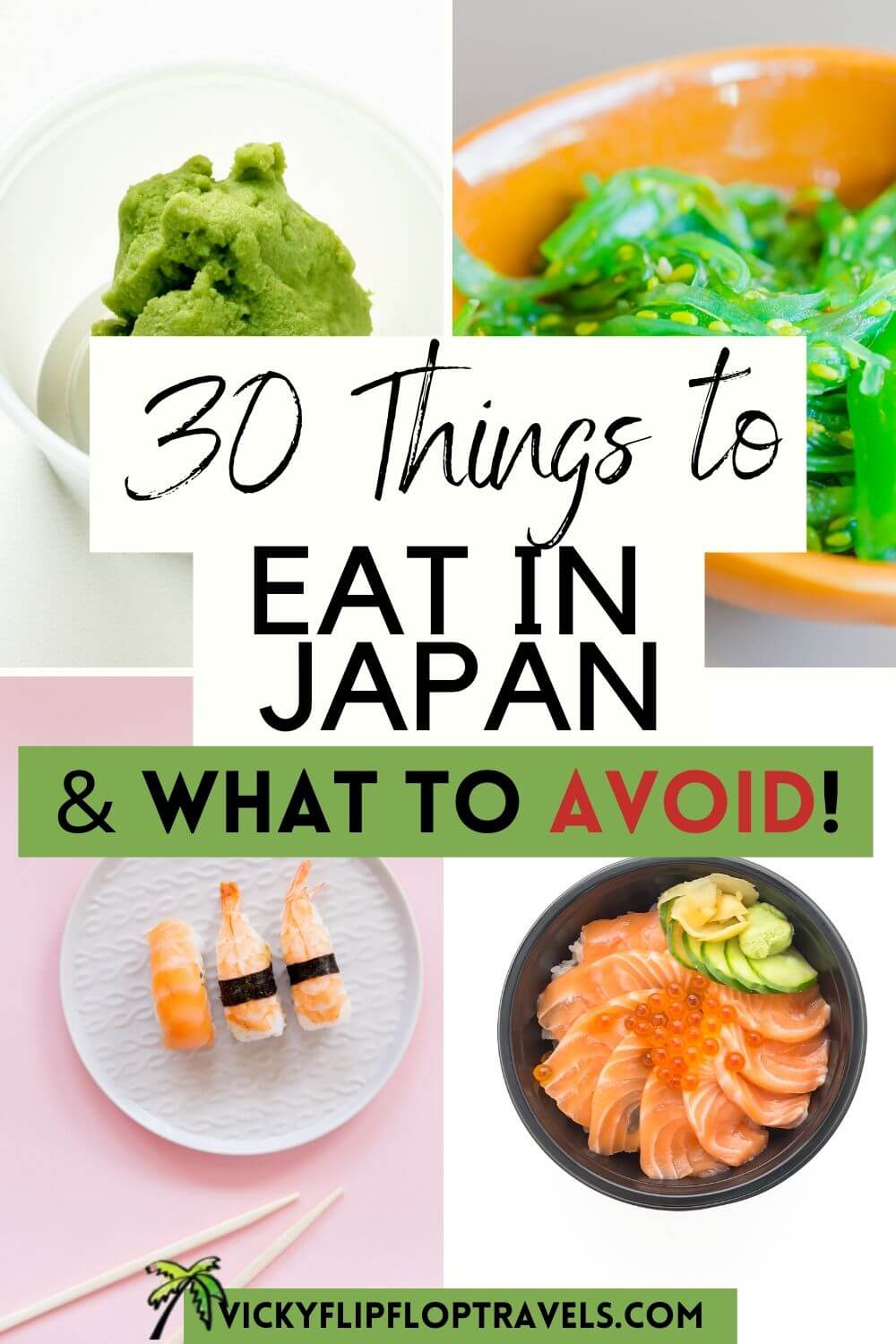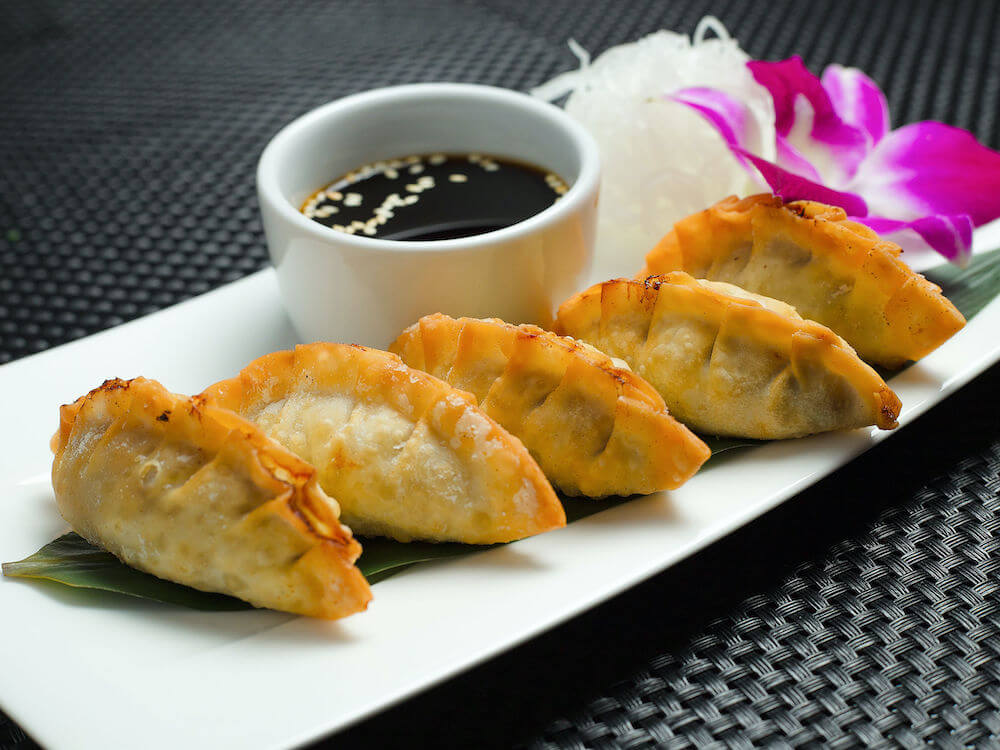Best Food in Japan: 30+ Things to Eat While You’re There
There’s a lot to say about the best food in Japan. It’s one of the reasons I love the country so much – the fact that the food in Japan is so different to what I’m used to at home.
Like every outstanding element of Japanese living (be it fashion or stunning product packaging), Japanese cuisine shows thoughtfulness and careful attention to detail. They blend unexpected combinations of ingredients to gift us with some of the best food in the world.
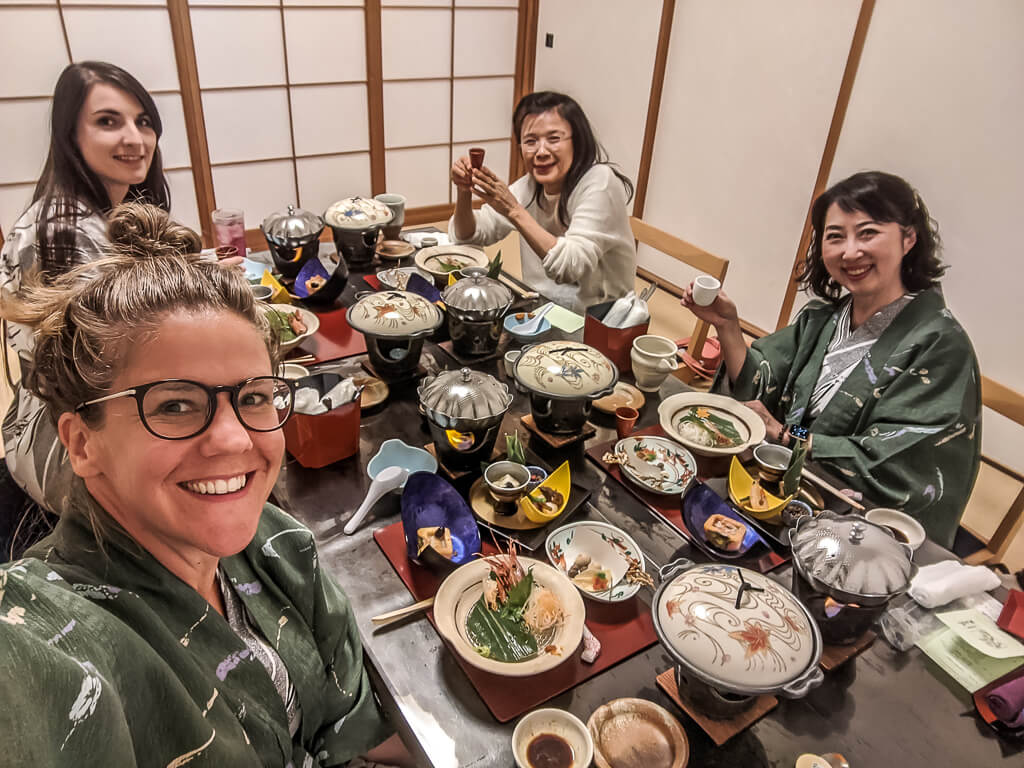
– Best food in Japan? (Almost) all of it!
From the immaculate preparation work that goes into sushi making to the cute pastries and desserts served in Instagram-friendly cafés, Japan has carved their name in culinary mastery. Of course, it gets pretty overwhelming for the first-time visitor when everything looks so good!
Japan’s best food is hard to choose, but let me take you through some of the things you should definitely eat in Japan. To help you navigate the yummy eats, I’ve put together a list of the best food in Japan.
What to eat in Japan
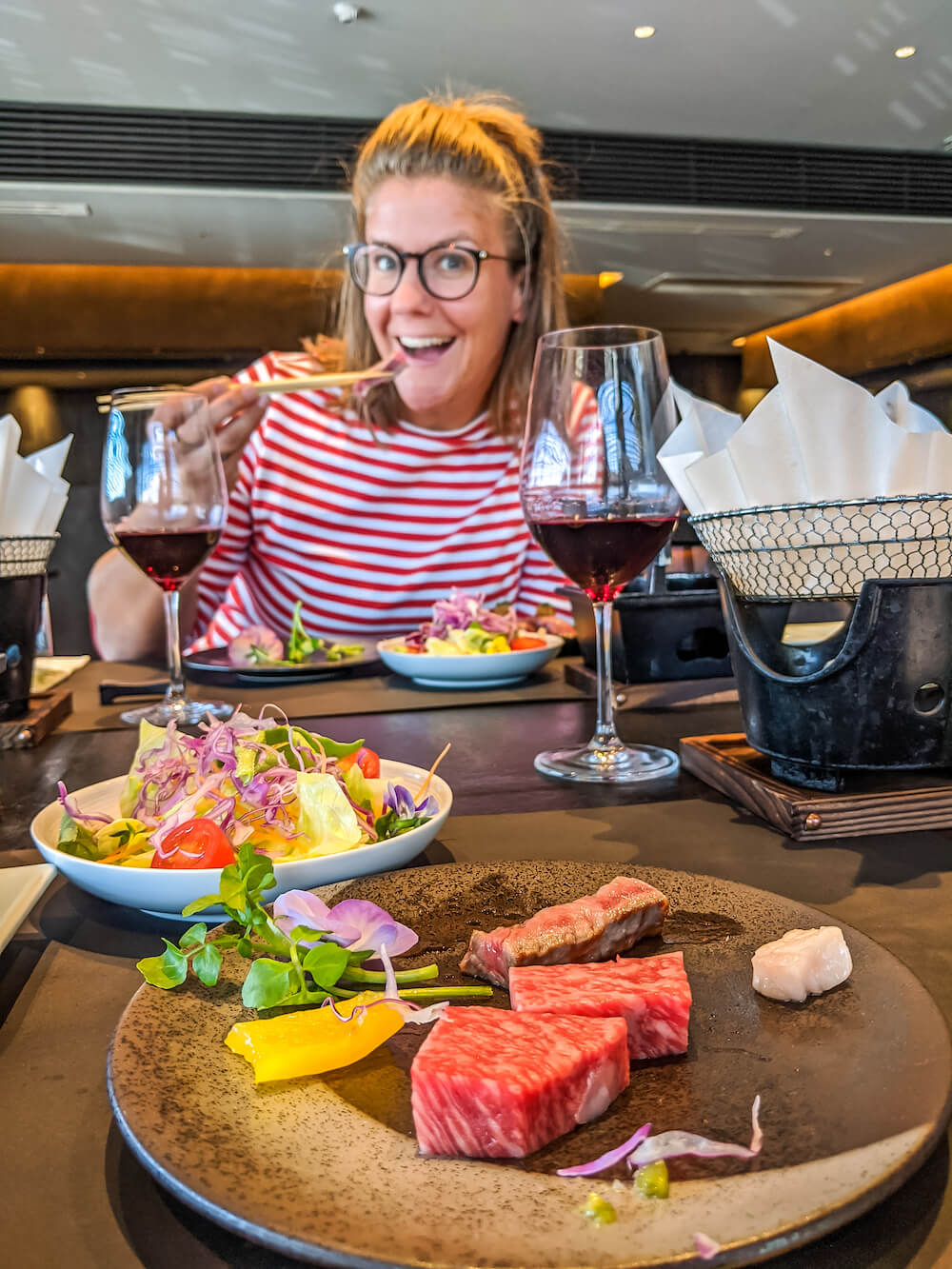
– The steaks have to be among the best food in Japan, surely?
What do Japanese eat for breakfast?
Pastries and freshly baked goods dominate social media feeds, but this morning luxury isn’t so standard for your average Japanese person. Busy office workers and those living solo often grab a quick coffee and toast set at the nearest café, sometimes skipping breakfast.
There is however, one sell-out bread item when it comes to breakfast in Japan:
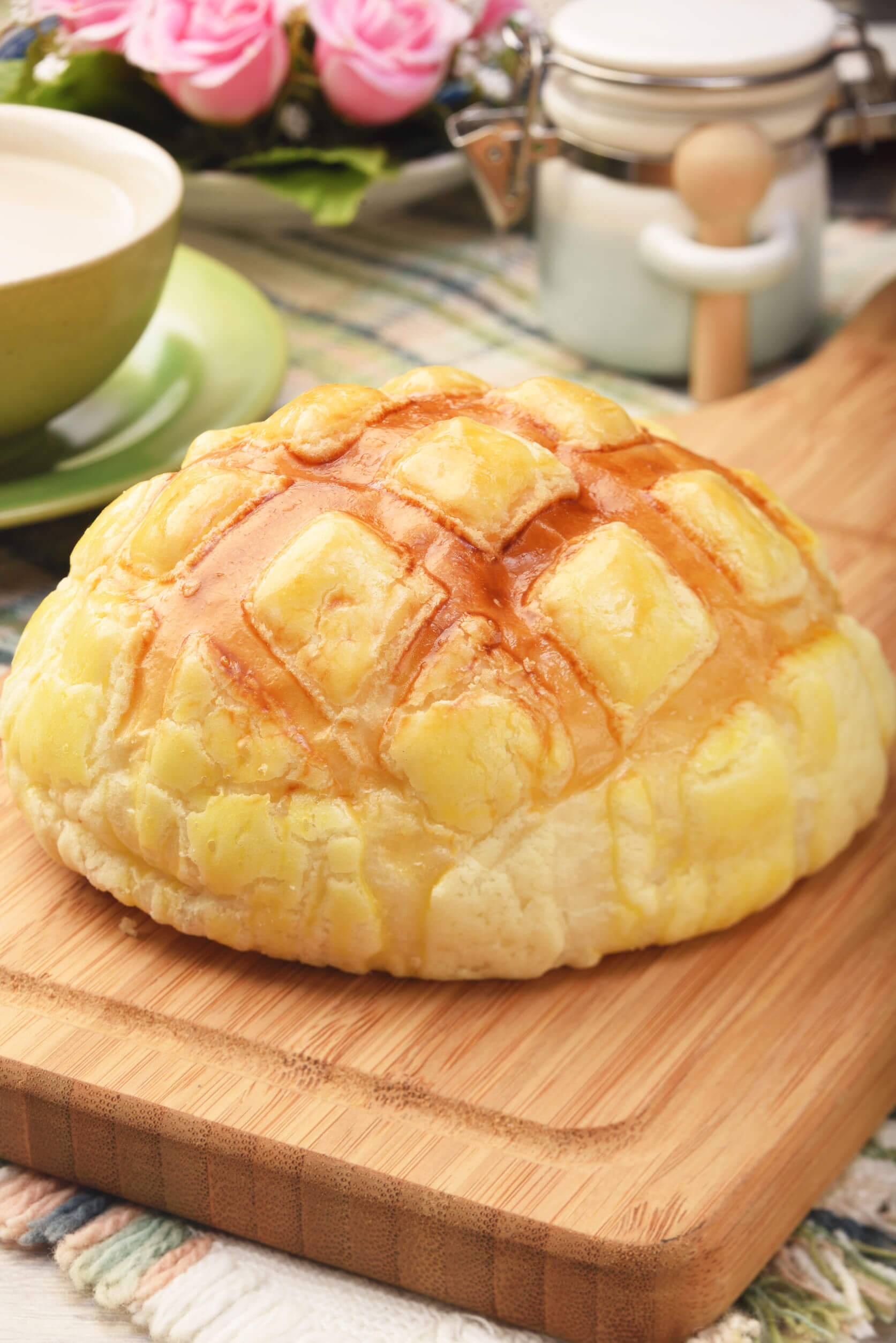
1. Kashipan, single-serve sweet buns, are the answer to the morning rush. The most popular include melon pan (sweetened with cookie dough top), an pan (filled with red bean paste) and kare pan (a deep-fried curry pocket).
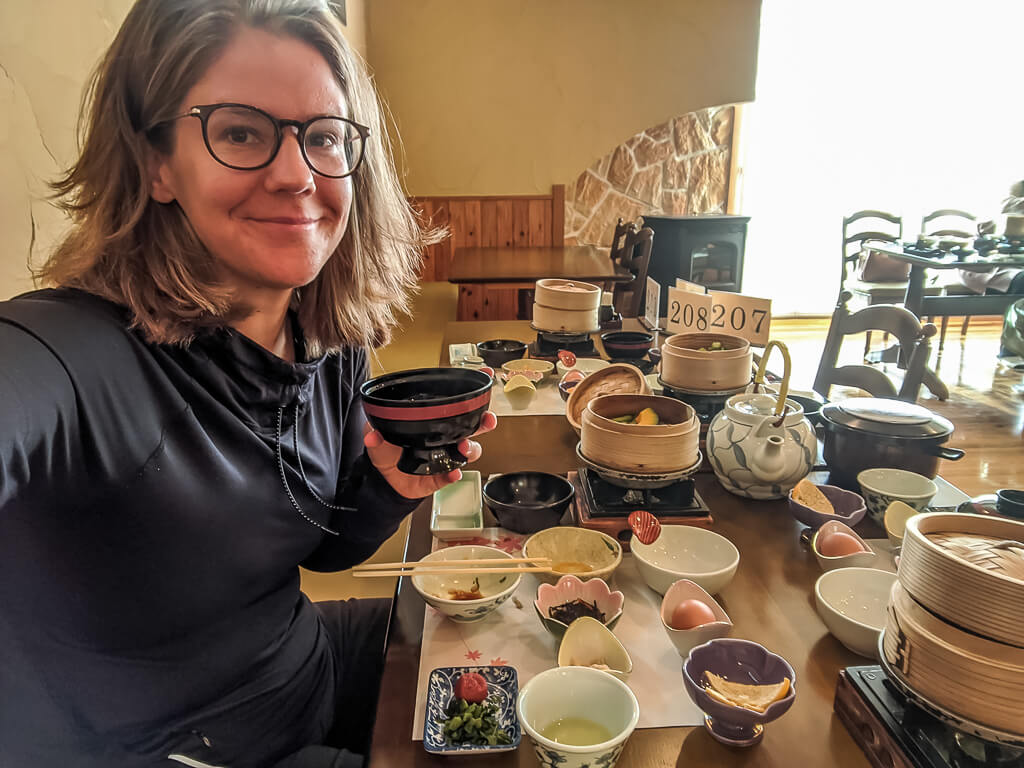
What do Japanese people eat for breakfast traditionally?
2. If you’ve ever been to a Japanese inn, you’ll note that the common breakfast spread includes steamed rice, grilled fish, dried veggies and pickles, miso soup. My favourite component is tamagoyaki, layered egg roll seasoned with soy sauce and sugar.
Best food in Japan
Let me start off by saying that I’ve tried all of these popular and common Japanese foods. As staples that you’d easily come across in any city or town, they’re regular lunch and dinner options for Japanese people.
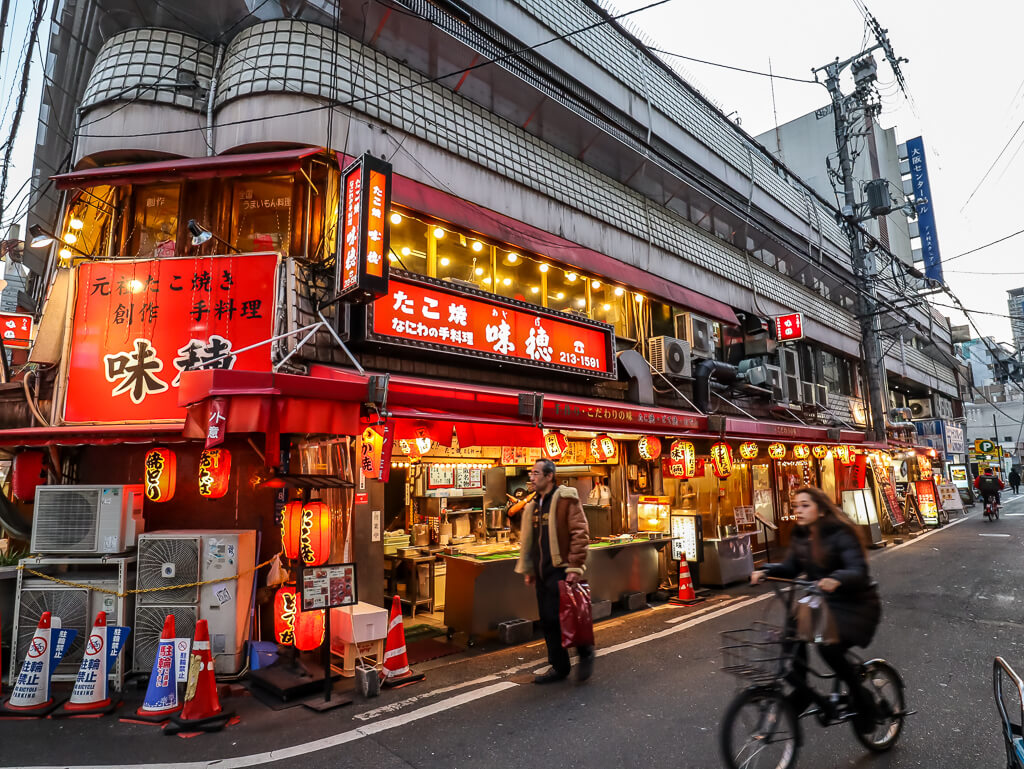
3. Ramen
Synonymous with Japan, ramen is a staple go-to that you’ll find at both fancy digs and hole-in-the-wall eateries. It’s a budget meal that I recommend whenever you’re stuck on food choices since most restaurants offer customisation.
Every region specialises in its soup broth, switching between miso (soybean paste), thick tonkotsu (pork bone), soy sauce and shio (salt base). Typical toppings include pork belly slices, seaweed, bamboo shoots and a half-cooked egg.
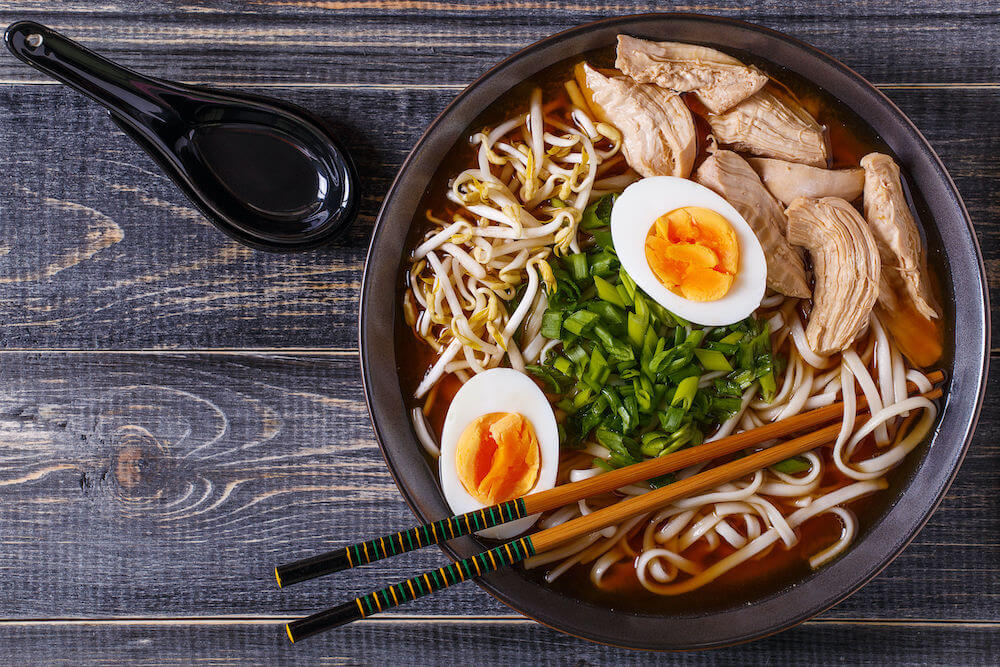
I do love a solid ramen bowl but let me suggest a variation to those who like salty, thick textures. Like ramen, tsukemen are typically chewy yellow noodles, except these tend towards the thicker side. You don’t slurp it out of soup either; instead, the noodles are given to you dry and dipped into an intense curry-like sauce.
When it comes to what to eat in Japan – Ramen is always a safe bet.
Eating noodles in a soup may appear a bit of a challenge, but the best advice is to start with the noodles as soon as the dish arrives, as they quickly become fairly soggy – and so harder to pick up with chopsticks. Don’t worry, though, slurping your noodles while holding the bowl close to your face is perfectly acceptable. Although in western eyes ramen wouldn’t be viewed as a fast food, it is in Japan and is often a dish people choose for a quick lunch.
READ MORE
Your Kobe Day Trip Itinerary: includes where to eat the famous Kobe beef!
24 Hours in Osaka: includes the best places to pick up the Osaka delicacies
Best Itinerary for 3 Days in Osaka: food, food, food!
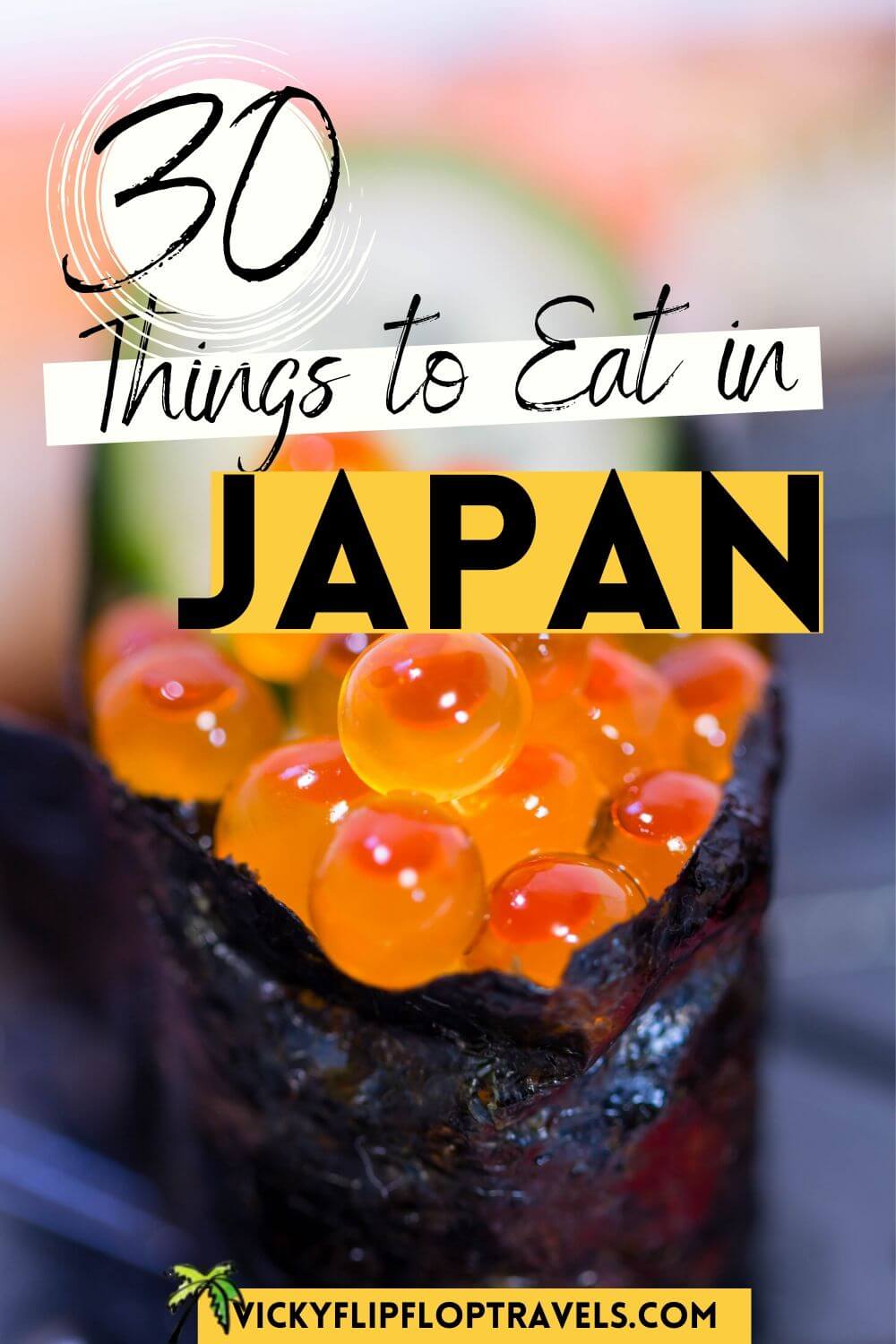
4. Yakitori
Did someone say guilty pleasure?
The aroma of chargrilled meat will stick to your clothes, built up after plates of chicken skewers. Triple the order on tender chicken and spring onion combo; I’m also a fan of crunchy heart and intestines (they’re delicious, I promise!).
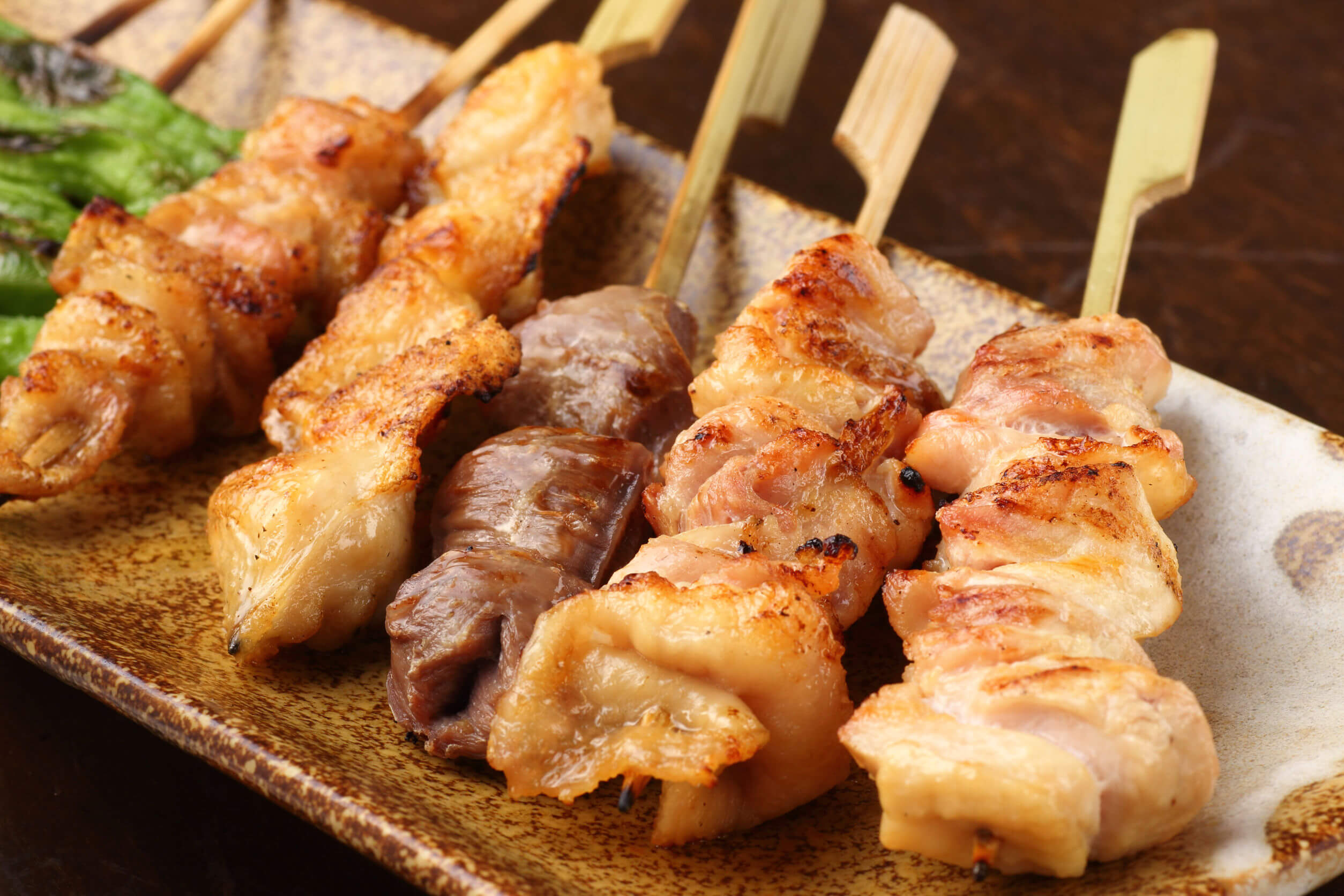
Fried chicken skin and soft gullet are also customary orders. When you start feeling heavy from all the grease, refresh with a glass of cold mango lassi.
5. Gyoza
Ooo gyoza are definitely one of my best food in Japan. Little parcels of deliciousness, dipped in sauce. YUM.
I like them with pork, or with duck. But I’d basically take anything TBH.
6. Sushi and sashimi
Fresh seafood slice placed atop bite-sized rice wrapped in seaweed; sushi is one of Japan’s best culinary inventions. Don’t be put off by the raw fish ingredient!
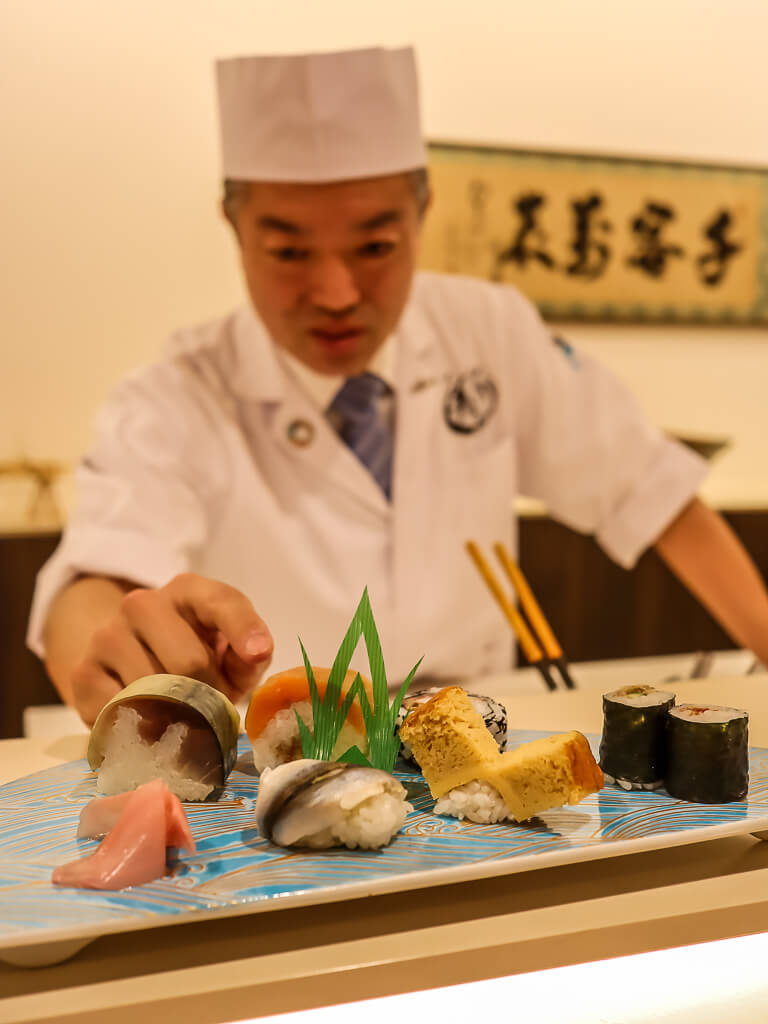
What to eat in Japan? Sushi is always a great answer.
Served nigiri-style (fish slice on rice) or in maki rolls (exactly what it sounds like), sushi ranges from cheap conveyor belt experiences to specialty shops where ingredients are sourced fresh from auctions. Sashimi is singular slices garnished with pieces of pickled ginger.
7. Katsudon & tonkatsu
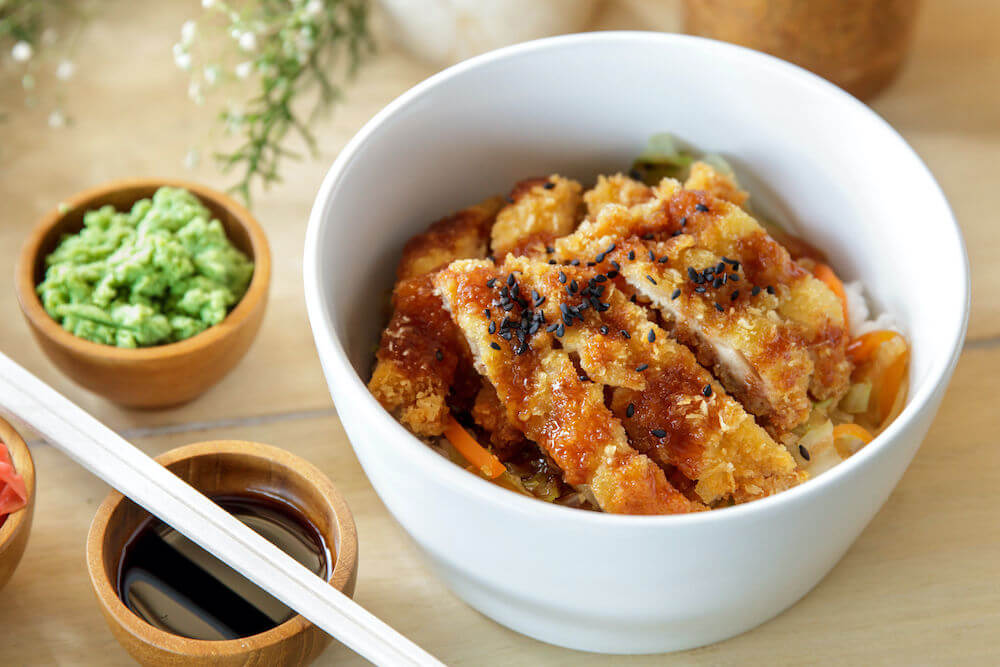
Tonkatsu, breaded and deep-fried slices of pork, makes a great lunch meal. Paired with rice, shredded cabbage and miso soup to form a set, the emphasis is on the cut of the meat. Building on that is katsudon, where tonkatsu slices intermingle with an eggy layer to alternate textures. I recommend this after long hours of exploration as there’s plenty of protein to energize.
8. Omurice
A staple for hungry students and budget travellers, omurice appeals with the fluffiest layer of scrambled eggs over fried rice.
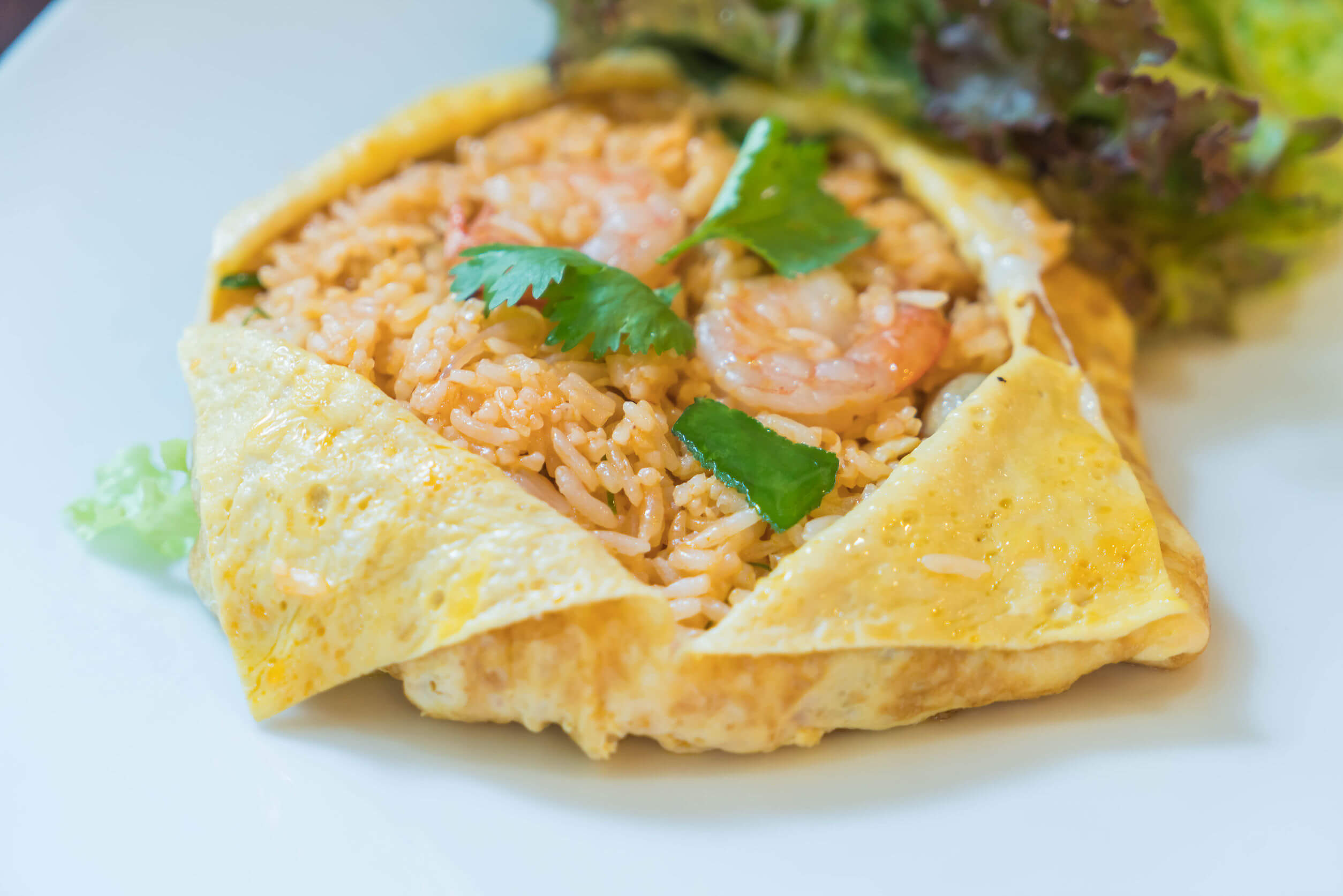
Best in the winter but all-year appropriate, the eggy cocoon is garnished with ketchup or curry for a taste of home. For more of that incredible texture, add cheese and spinach to the filling.
9. Tempura
While this battered food of our dreams is often served with udon and soba, it can be eaten as it is. Seafood and vegetables are wrapped in golden and crispy layers to offer interesting textures; dip it in the light sauce provided for even more flavour.
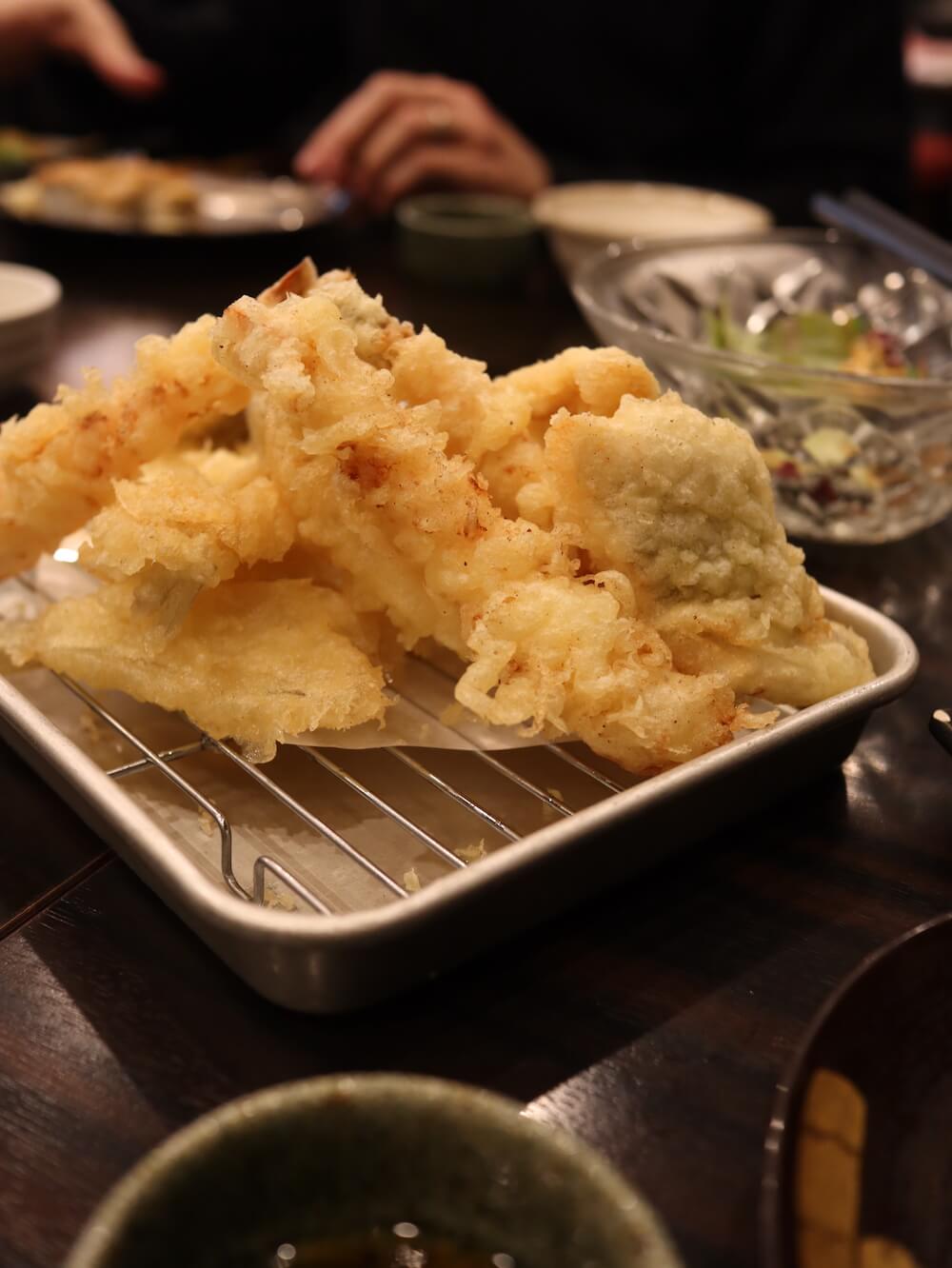
If you’re in Tokyo’s Asakusa, some specialty tempura restaurants offer a small dish of salt for flavouring instead. I LOVE tempura – definitely high up on my best food in Japan list!
10. Udon
Thick, chewy and perfect for slurping, udon is one of the most flexible types of noodles to work with. Made from wheat flour and brine water, udon can be served both hot and cold – even mixed into stir fries or dipped into thick soup base.
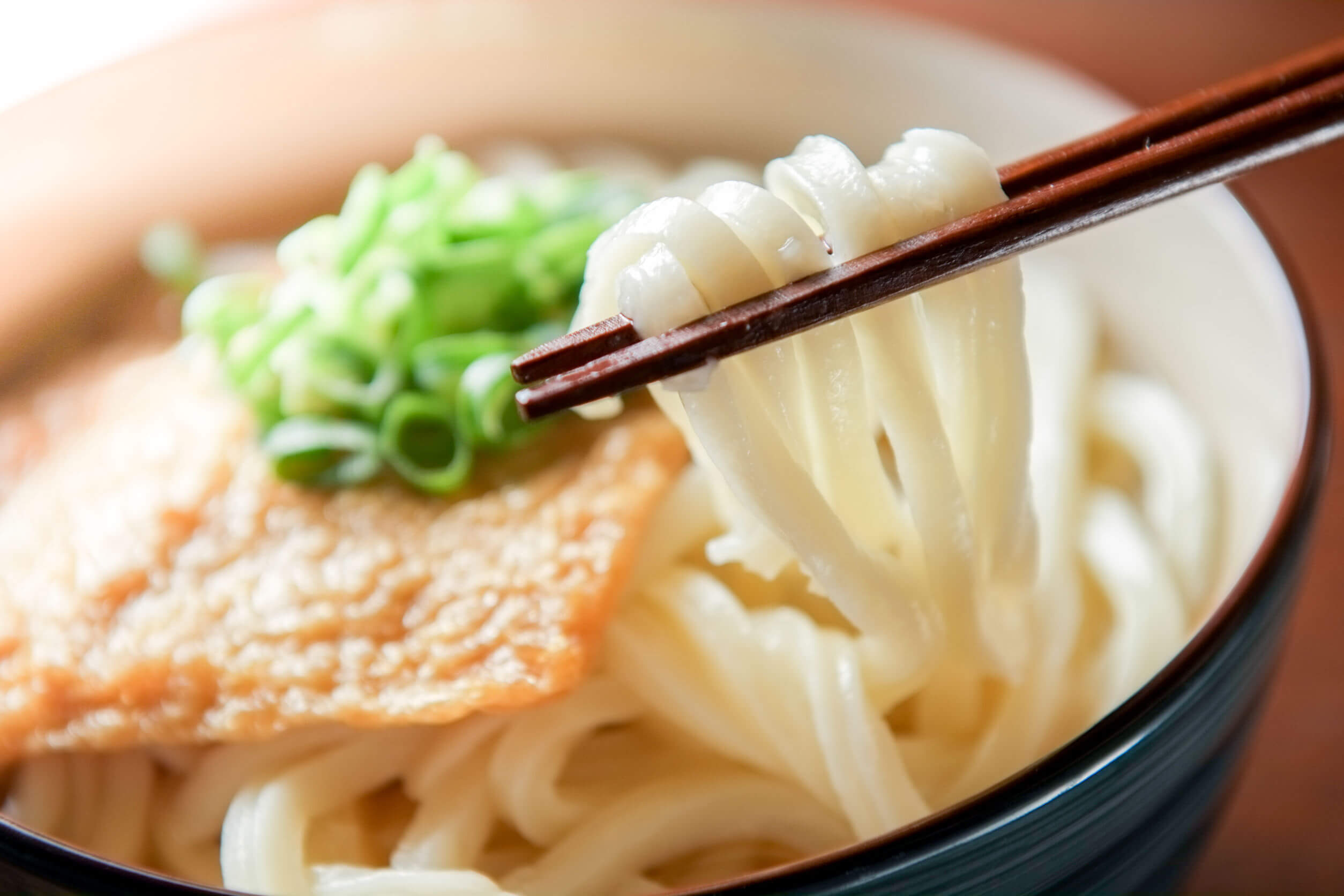
I prefer the classic savoury soup broth topped with sweetened fried tofu, which is cheekily named kitsune udon or ‘fox’ udon. You won’t want to miss this during winter!
If you want some of these delicacies delivered direct to your home, check out a Japanese snacks subscription box like the Sakuraco. Check out my Sakuraco review here.
11. Soba
If udon is a winter miracle, soba is your summer fix. Literally named ‘buckwheat noodles’, soba tends towards an earthy and nutty flavour that offsets the strong scent of garlic and sesame.
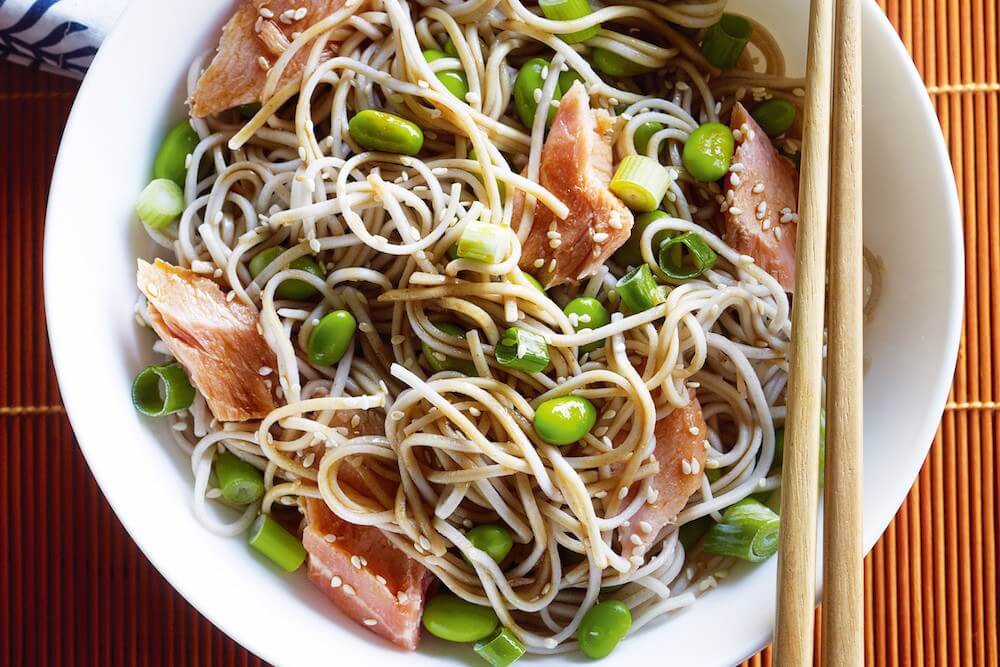
Served both hot and cold, it’s most popularly eaten by dipping it in soy sauce and dried bonito blend. There’s even a traditional variation cooked on roof tiles (literally!), where tea noodles are used instead.
They’ve been eaten for centuries, as far back as the 1600s when they were the Samurai dish of choice. Soba noodles are made of buckwheat flour, but some restaurants add some wheat flour to avoid the soba being too brittle.
There are lots of types of soba dishes, so just like ramen, it’s a very adaptable dish. Mori Soba are eaten cold, with a soy dipping sauce. There’s also Green Tea Soba (matcha), where the buckwheat flour is mixed with matcha powder to alter the colour.
A traditional New Year’s Eve dish is Toshikoshi Soba, which is said to bring long life to those who eat it. Soba noodles are often served in a similar way to Ramen, with a bowl of broth that can contain vegetables, meat or fish. You could even make a soba noodle dish at home, using Yutaka noodles which can be bought in supermarkets or online.
12. Miso soup
We all know of miso soup, which is present in almost every set meal. Might not be the best food in Japan, but it’s definitely one of the most traditional.
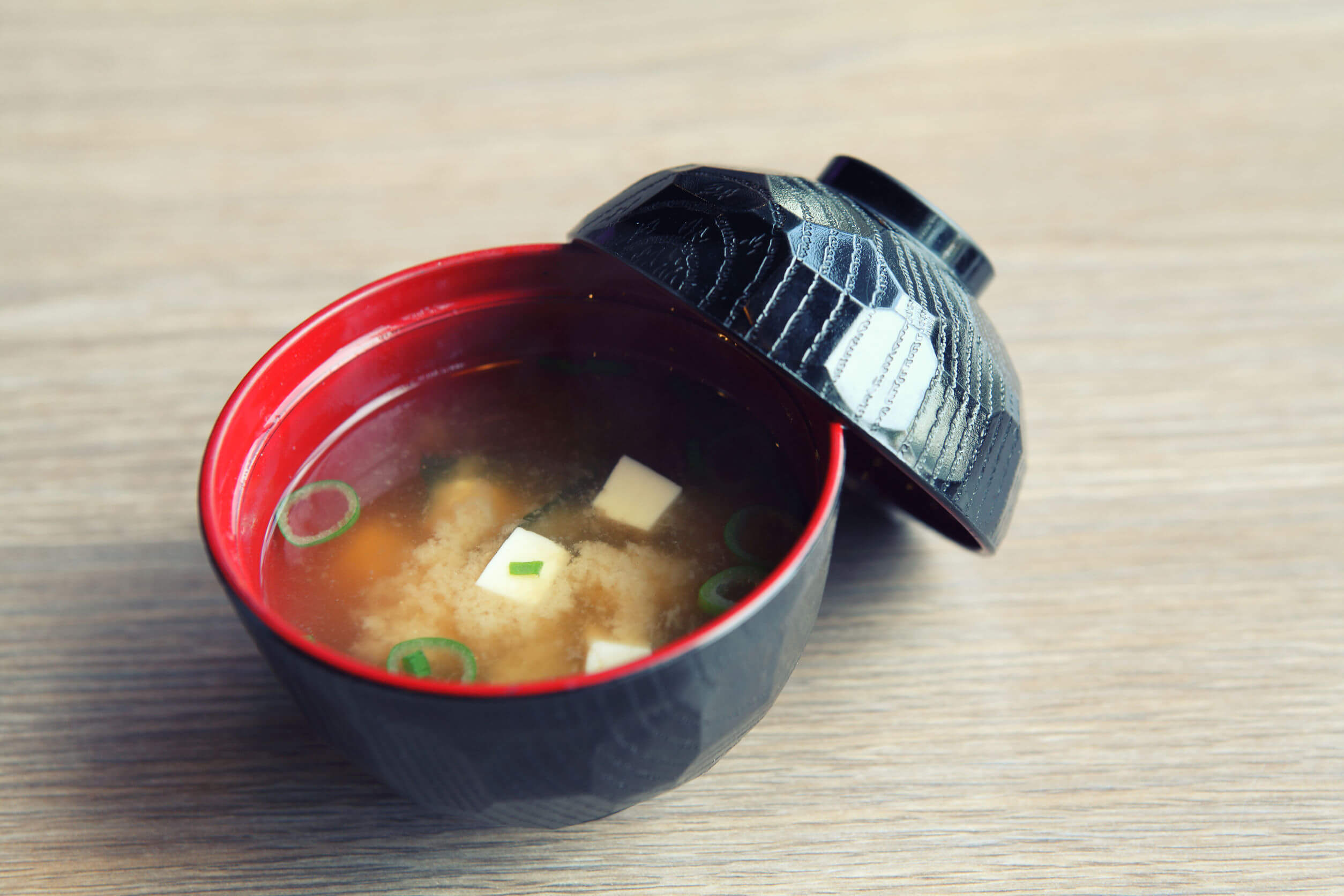
Combining miso paste and dashi broth, the soup is served as a side dish. The soup itself might look simple, revealing pops of fried tofu strips, soft tofu cubes, seaweed and green onion, but the flavors are complex. So delicious!
Fancy seeing somewhere a bit different in Japan?
How about Shiga? Located just over an hour from Osaka, on Lake Biwa, there are loads of things to do in Shiga. Check out my video to find out more. I had some incredible food there!
Best Things to Do in Shiga, Japan
Quick and easy foods to eat in Japan
Just to note, there are over 5 million vending machines in Japan – you can’t go hungry even if you don’t have much to spend. For more facts about Japan, check out my blog post. And if you’re worried about eating solo: 7 Eating Tips for Solo Travellers.
13. Donburi
To sum up donburi, it’s steamed rice topped with either beef or pork slices, or salmon. Plenty of fast food restaurants such as Yoshinoya and Matsunoya serve donburi; great for a quick bite between schedules.
If you’re looking for something filling to eat in Japan, Donburi is the one.
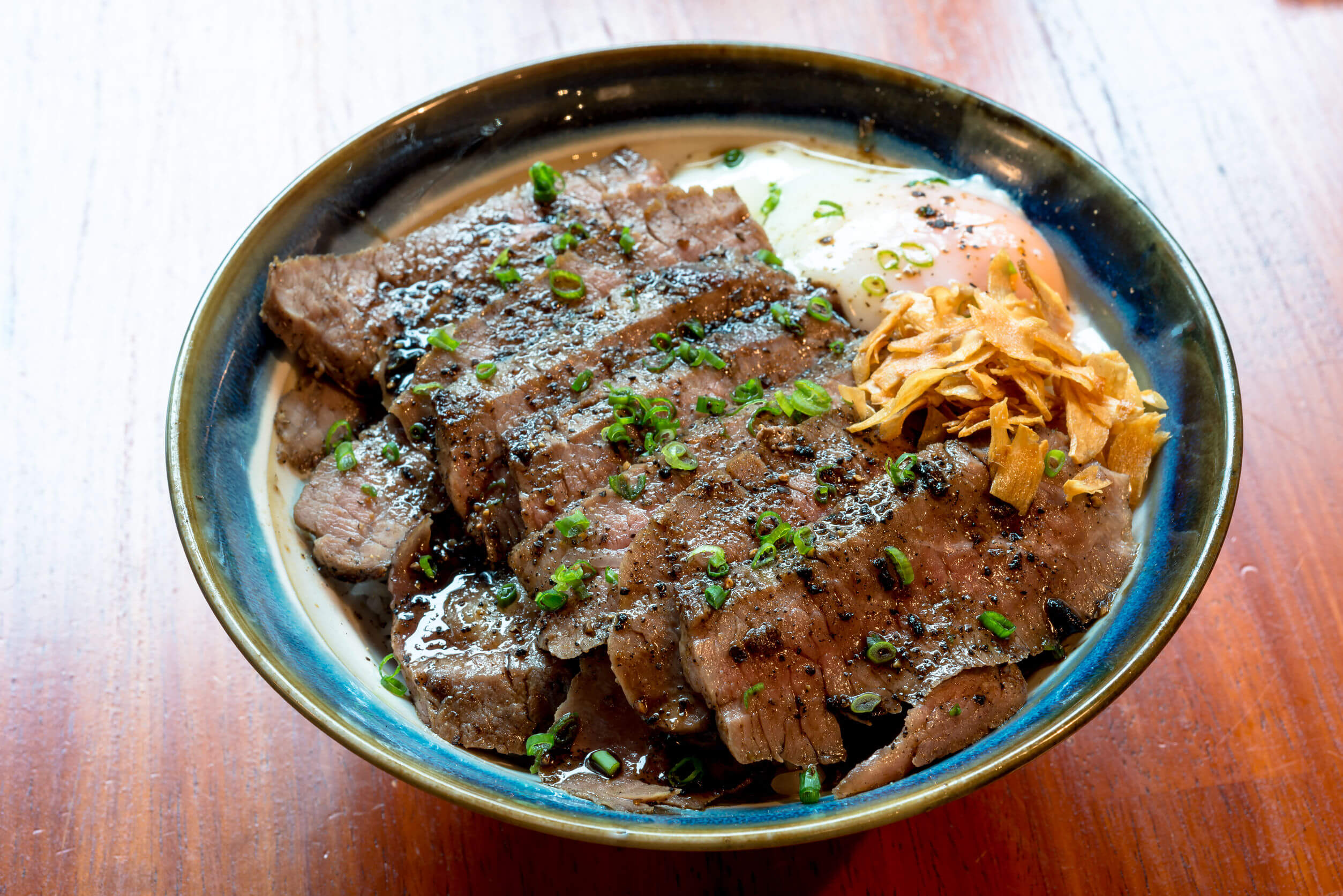
14. Onigiri
Step foot in any convenience store and you’ll find that onigiri dominates an entire shelf. Cheap and quick to eat, it’s a crowd favourite among office workers and students.
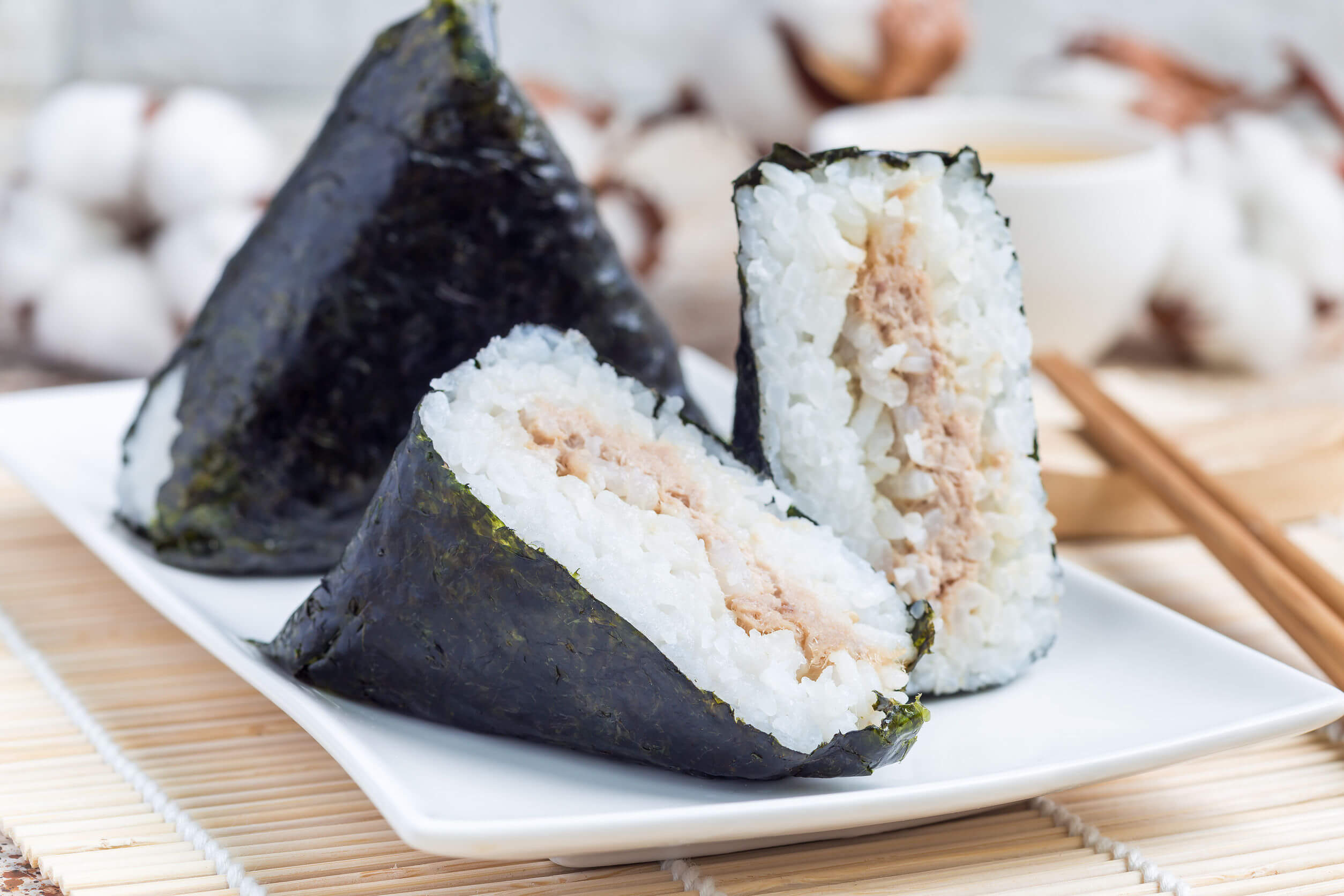
Classic fillings range from pickled Japanese plum to an addicting tuna and mayo combo, as well as salmon and grilled pork. Don’t underestimate its simple shape and wrapping – it’s notoriously hard to get the perfect rice consistency.
15. Curry rice
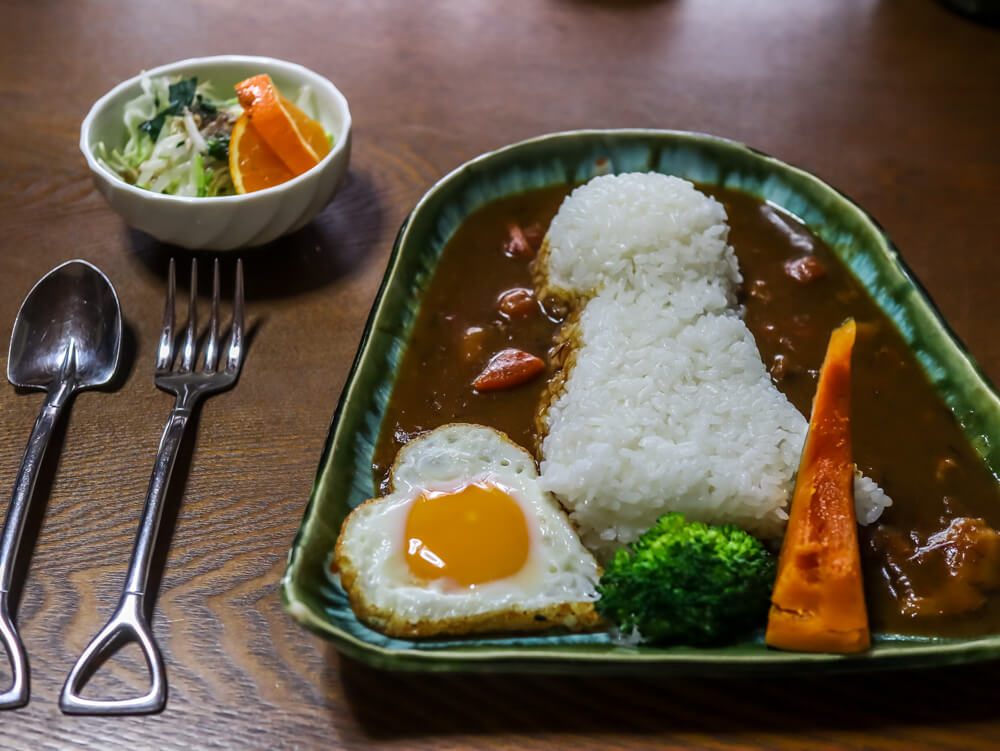
What more do I have to say? From global chains like Coco Curry to independent curry houses; it’s a popular lunch option. Since Japanese-styled curry rice is served speedy and reasonably priced, it balances between being a fast food and sit-down indulgence.
Traditional things to eat in Japan
Tokyo is like a sampling plate that collects regional specialties – if you get the chance to visit all the major cities, do experience their authentic local dishes. Osaka’s okonomiyaki and Nagoya’s hitsumabushi are some of Japan’s best food; traditional kaiseki on the other hand, is a cultural experience best enjoyed in mountainous towns.
It might seem intimidating to go for traditional things, but they are, of course, the best food in Japan!
16. Kaiseki
You don’t get any more traditional than a full course kaiseki meal. In fact, it’s a cultural experience well worth the price. Often served at Japanese inns or as a high-end meal, the exclusivity comes from the seasonally prepared menu and intricate presentation.
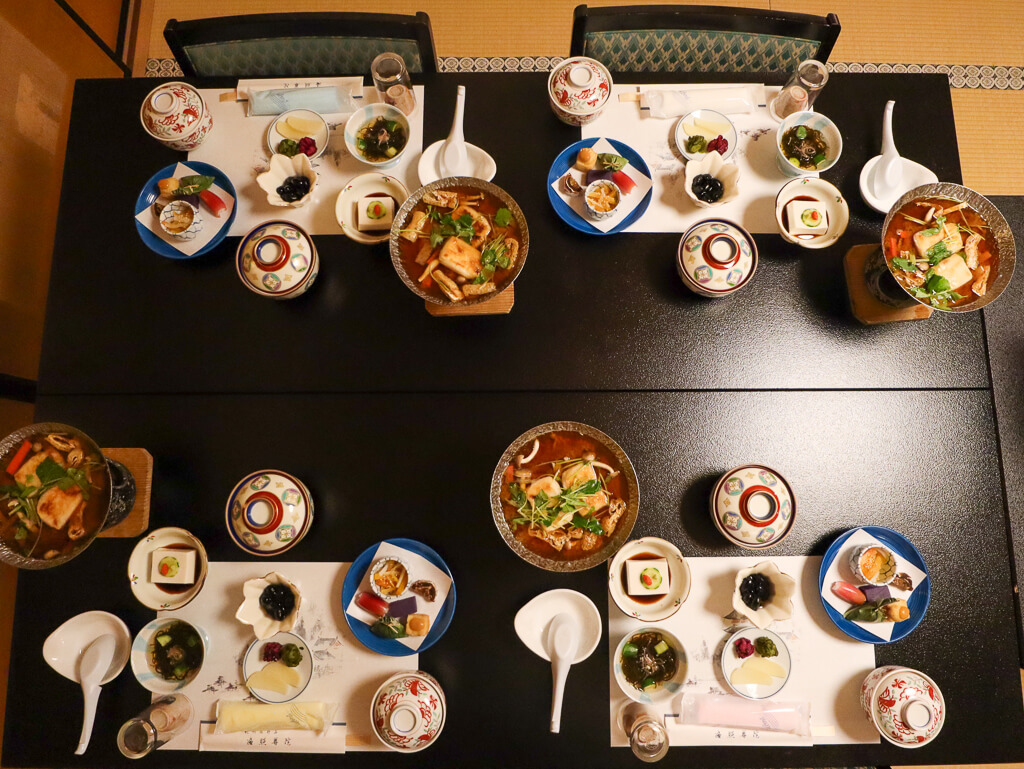
Your server will go over each dish to inform you on ingredients, sourcing and preparation method. In my experience, I was presented with a series of small dishes made with fresh, seasonal produce (local to the region); they all demonstrated different cooking techniques! Then came the slow-cooked rice flavoured with crab meat, which was the regional specialty – it was delicious.
The Kaiseki at the Koyasan Temple stay was particularly impressive!
17. Nabe
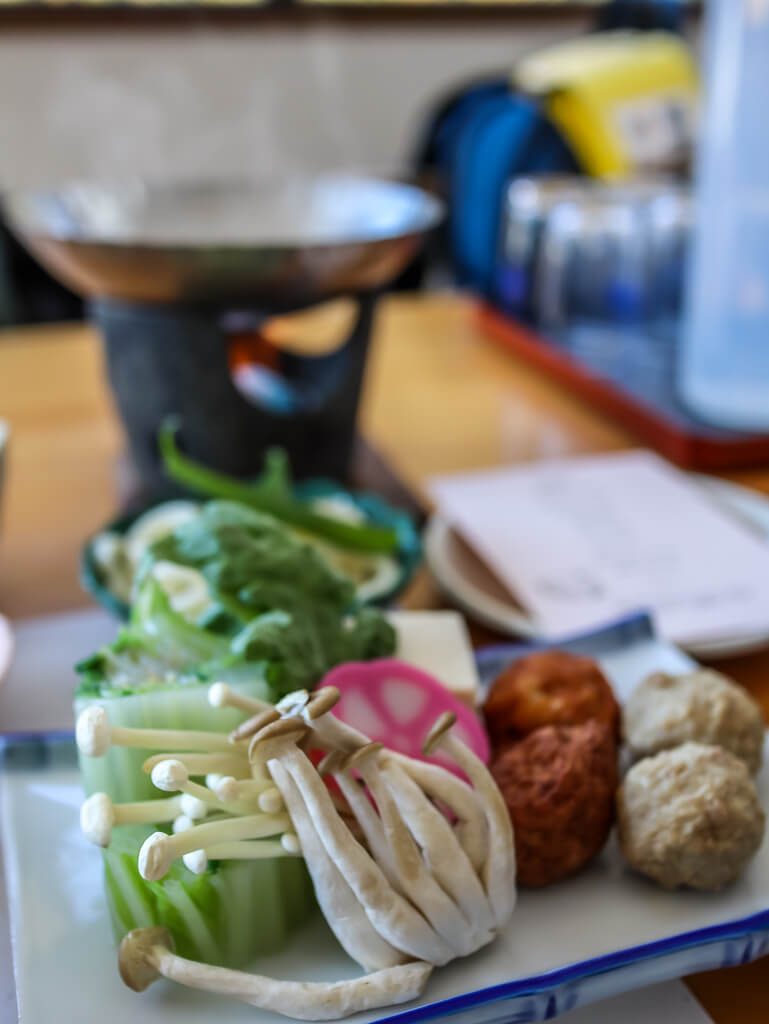
Without doubt, nabe reins top on my love list. If there’s one authentic Japanese cuisine to sample, this bubbling pot of konbu and soy sauce broth entertains with meats, pastes, noodles and veggies. Of the most memorable deviations (the lighter broths of sukiyaki and shabu-shabu non-withstanding), the creamy soy base of famous Shirakawago’s nabe draws me back time and time again.
18. Okonomiyaki
This Osakan specialty also ranks high on the list!
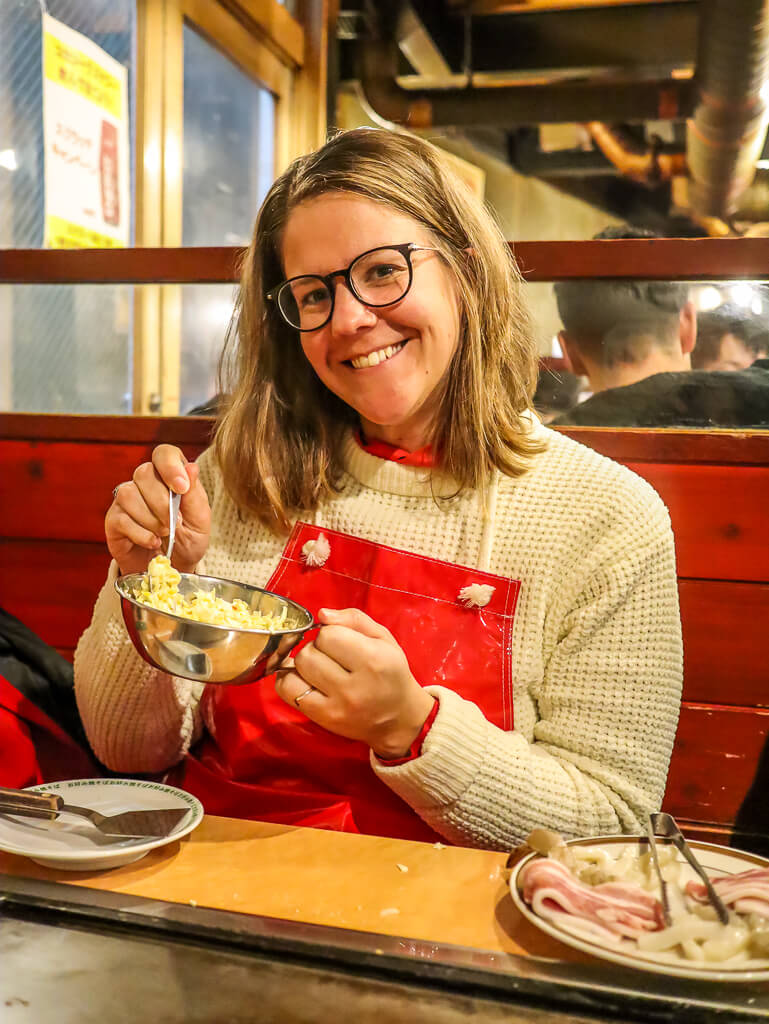
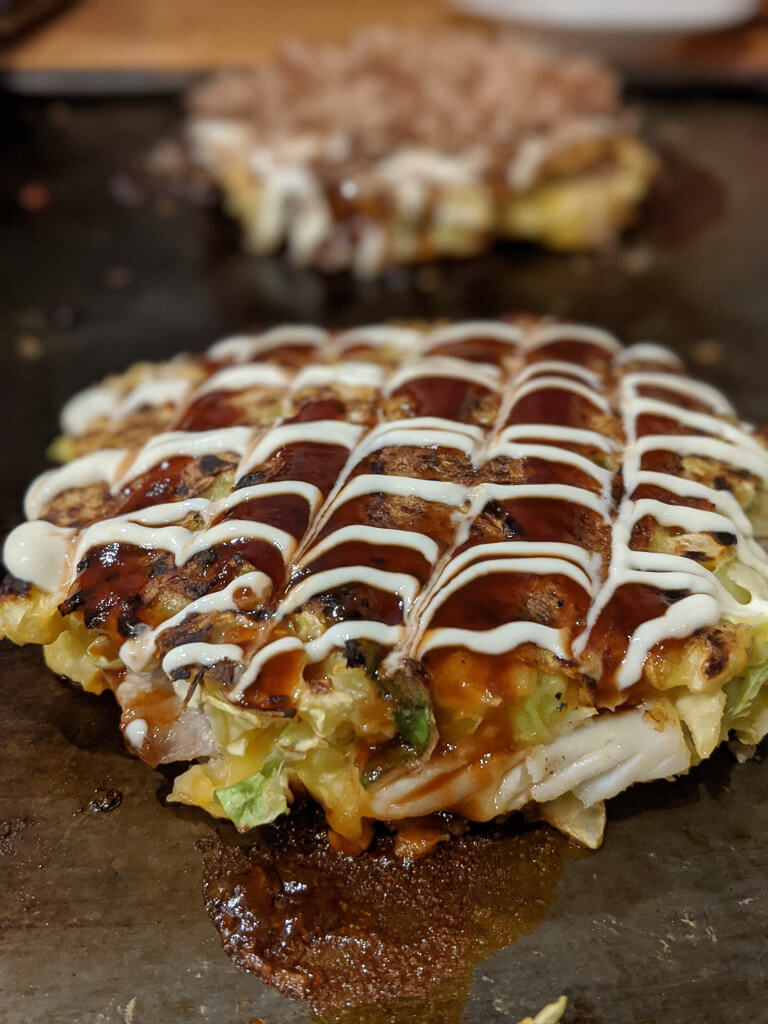
A batter of flour, eggs, grated yam, dashi and shredded cabbage is pancake-cooked to browned perfection; a thick sweet sauce is then brushed on top. Dump a heaping of bonito flakes, slather in mayonnaise and voila! – one of the best foods in Japan.
Just like a western savoury pancake or French crepe, toppings and fillings can vary enormously. The name actually means something like ‘to your liking’, meaning diners can customise the basic dish in the way they prefer. Some restaurants in Japan specialise in producing okonomiyaki, with chefs cooking in front of diners, or even customers cooking for themselves using a griddle at the table.
Okonomiyaki is a dish that’s particularly popular in western Japan, in cities such as Osaka and Hiroshima. In Kansai style okonomiyaki (from Osaka), all the ingredients are mixed in with the batter and cooked together, then decorated with okonomiyaki sauce, dried seaweed (aonori) and smoked bonito (dried fish shavings) to taste. The Hiroshima style okonomiyaki, however, has a thin pancake that’s cooked first, and then the cooked ingredients are place on the top, before the sauce and other toppings.
It also comes on a bed of yakisoba noodles, so it’s often a more substantial dish.
You can get okonomiyaki packs to take home as Japanese souvenirs to eat for later.
19. Hitsumabushi
Grilled eel over rice is an easy street find; traditional hitsumabushi is a mouth-watering experience. There’s an art to eating hitsumabushi correctly too.
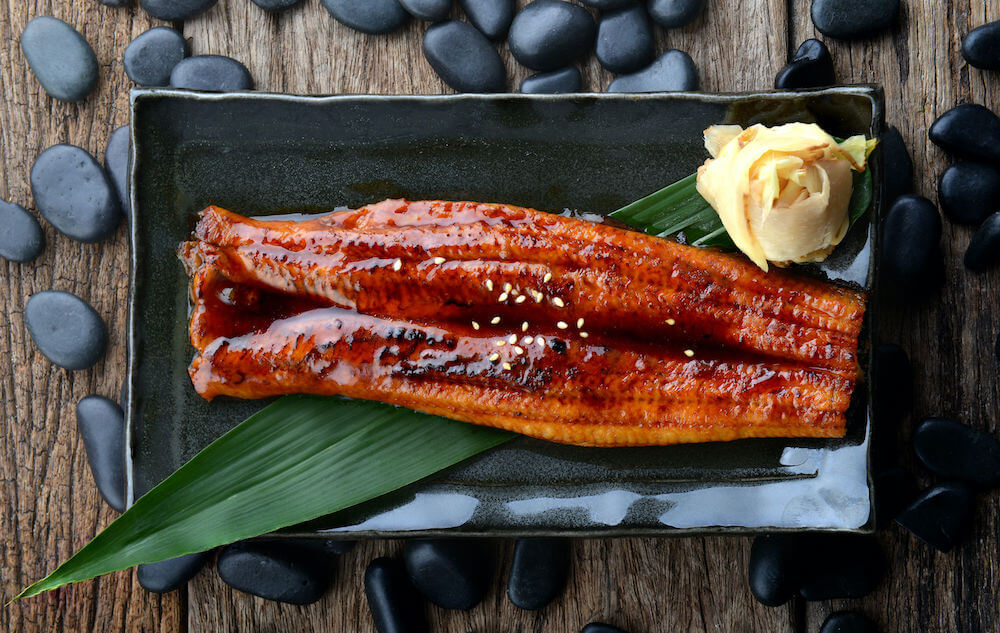
Draw four quadrants through your eel rice bowl; the first is to be eaten as it is. Pour the accompanying light broth over the second quadrant – eat it warm. The spring onion and wasabi (or seaweed) can be mixed into the third quarter per your preference. The last bites can be eaten however you like!
You can find hitsumabushi restaurants across the country but the most authentic come from Nagoya.
Read more foodie posts on my blog
Food Guide to the Cinque Terre
7 Best Food Experiences in Tel Aviv
My Top 7 Favourite Food Experiences in New Orleans
20. Oden
Another winter hot pot dish to make the list, oden technically falls under the nabe category. Cobbling a hearty pot of proteins and vegetables – think fish cakes, mochi rice cakes, boiled eggs, scrumptious radish, tofu and konjac yam – you get stew-infused goodness.
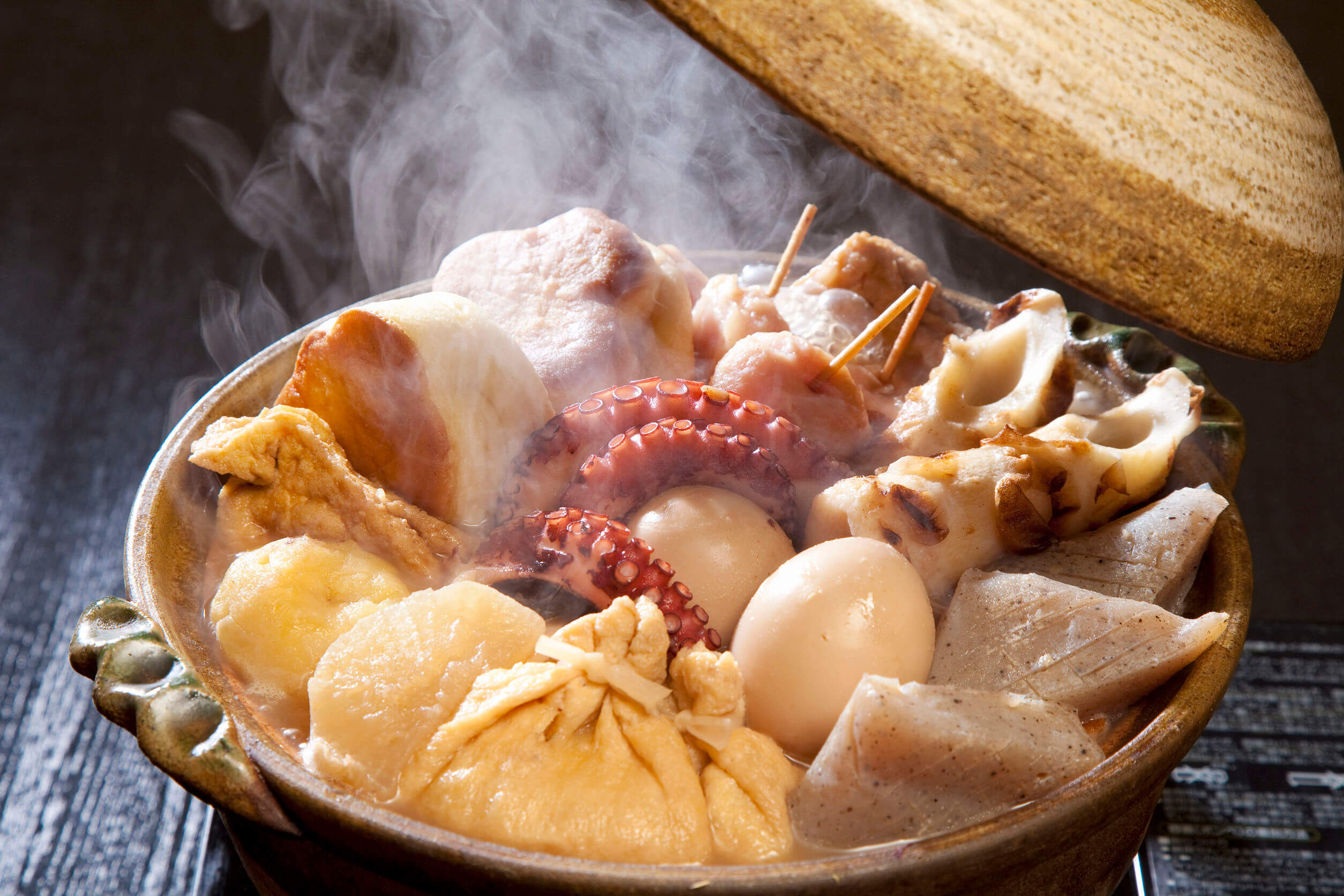
If you’re eating with friends, swoop in to get your favorite pieces and dab it with mustard.
21. Chawanmushi
Mellow and smooth, chawanmushi is one of the most unique traditional dishes in Japan.
To be honest, I can’t stomach this but you might like it.
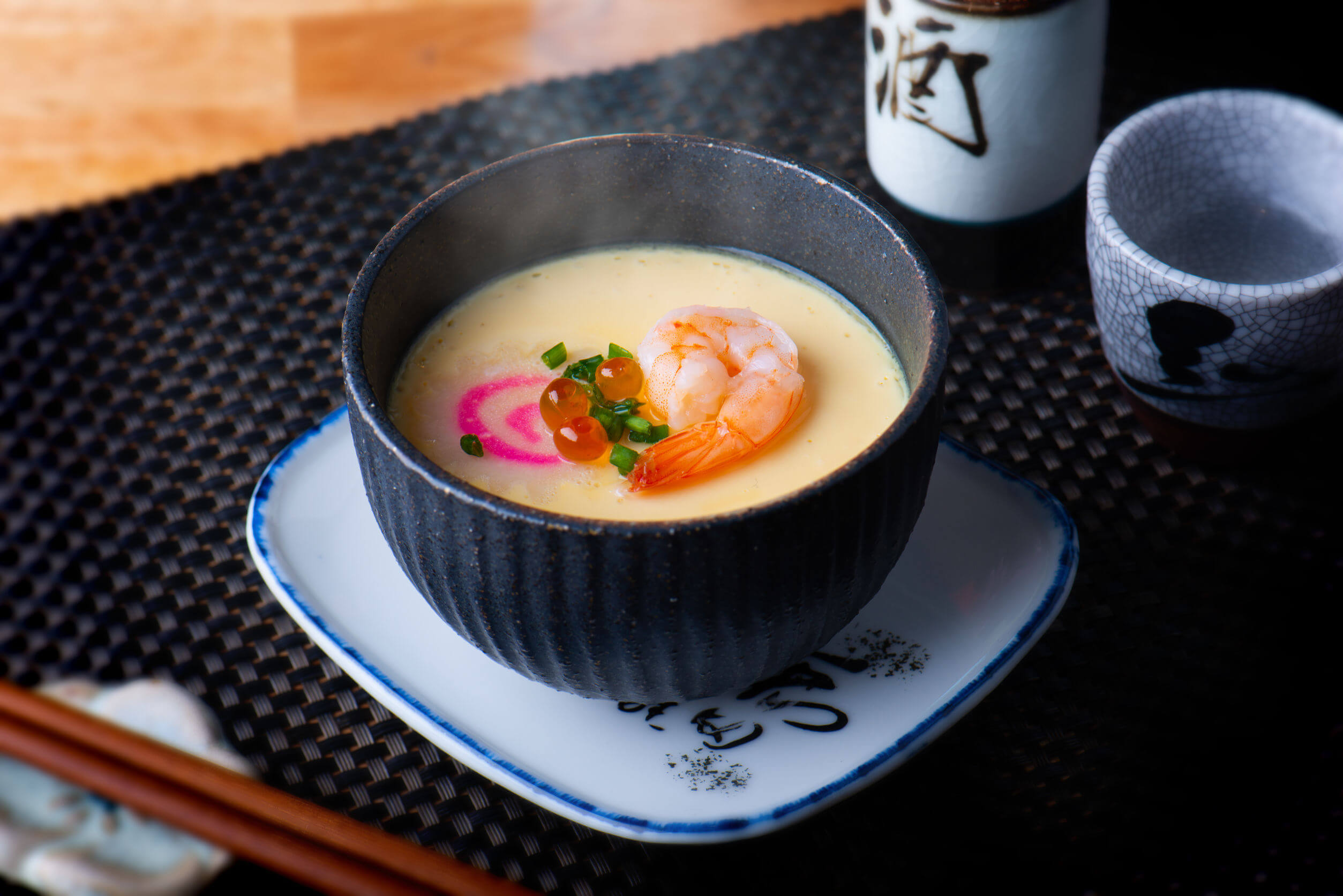
22. Ochazuke
Ochazuke is another comfort classic you have to try. A relatively simple one-bowl dish where steamed rice is partially steeped in green tea, it leaves an aromatic impression.
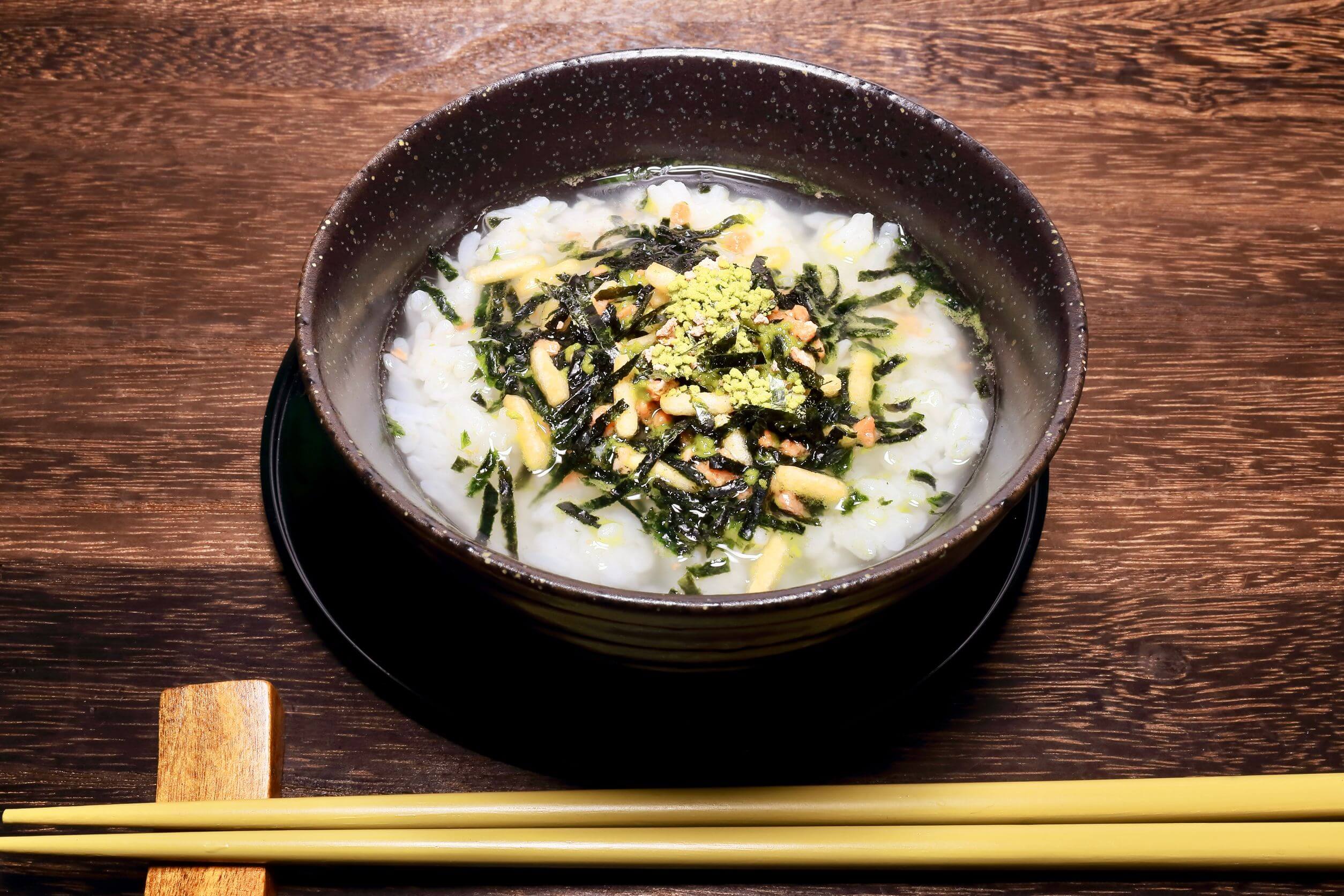
The weird, interesting & endangered
There is honestly no limit to the weird food that Japanese people eat, whether it’s considered a delicacy or “why not?” trend. It is amazing however so see how inventive they can be. Here are a few interesting foods that I’ve tried or heaard of that are perfect for adventurous eaters.
23. Natto – The only word I can use to describe natto is weird because its sticky consistency is at once slimy, gooey and kind of firm.
Contradictory, right?
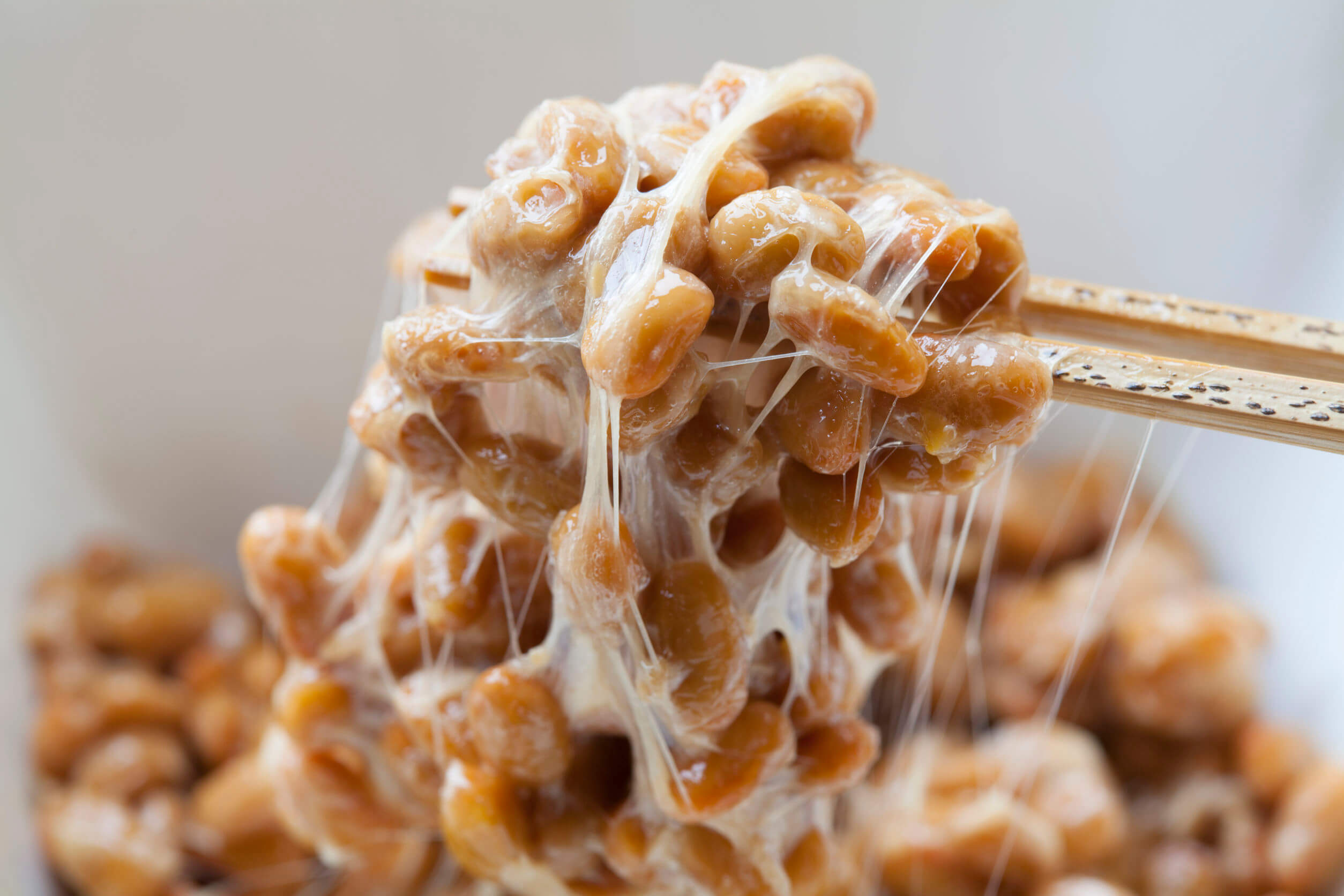
Some Japanese people tout this as one of Japan’s best foods, having grown up eating it; others simply say it’s one of the healthiest. Famous for its not very appetising smell, Japanese people assume only they can stomach it. If you prove otherwise, bravo.
24. Mentaiko
I can’t confirm nor deny my love for the mentaiko (the jury really is out on this one), but its peculiar taste is hard to forget. To get this salty delicacy, pollock and cod roe is marinated in either salty, savory or spicy seasoning.
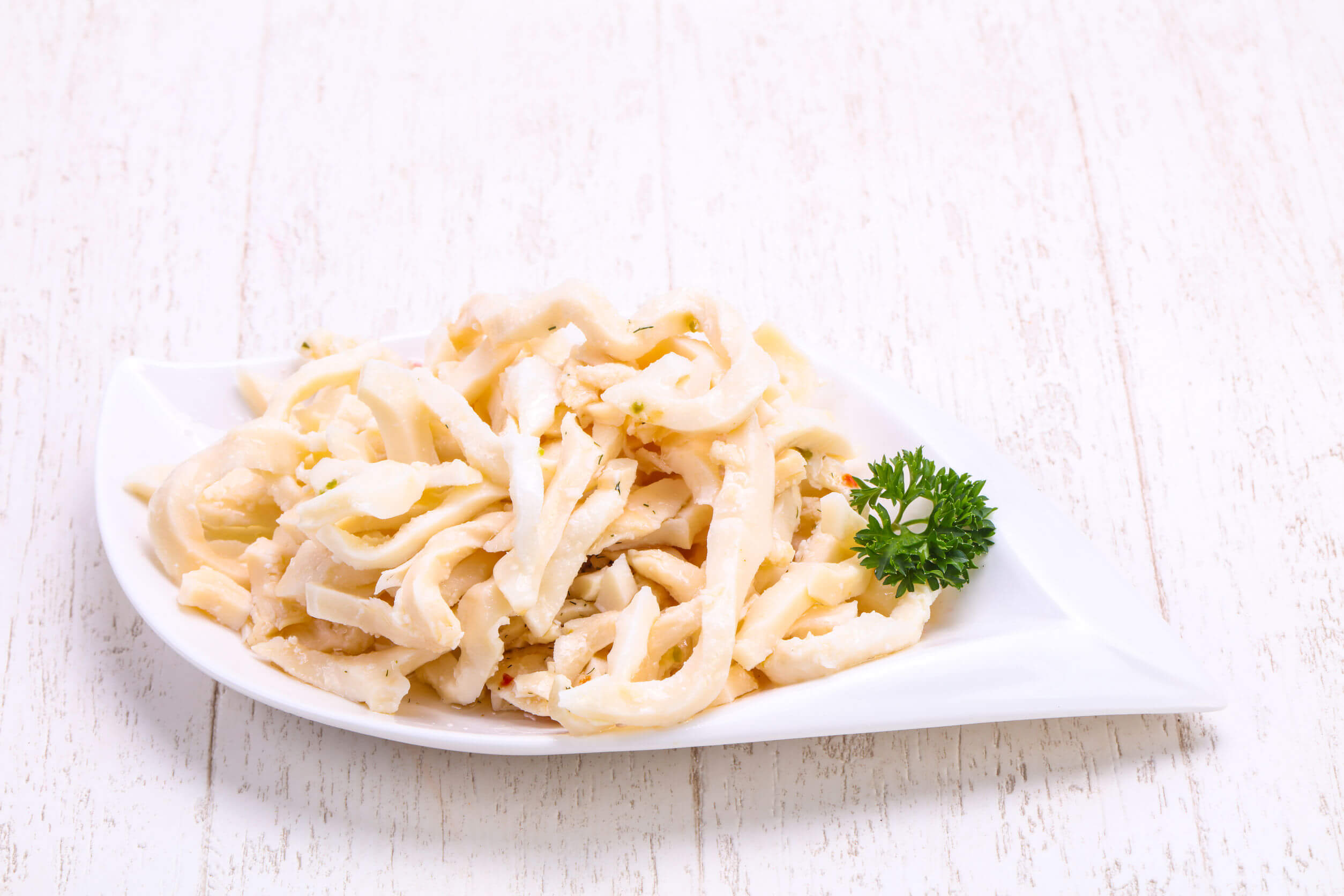
Traditionally a side dish served on rice or ramen, it’s slowly introduced into innovative dishes, mixing with butter or cream to form a pasta sauce.
25. Sea urchin
It’s hard to imagine breaking open the hard, spiked exterior of sea urchins to find its gooey organs but the edible parts are considered an expensive, savory food in Japan. Some might even argue it ranks high up on the ‘Japan best foods’ list.
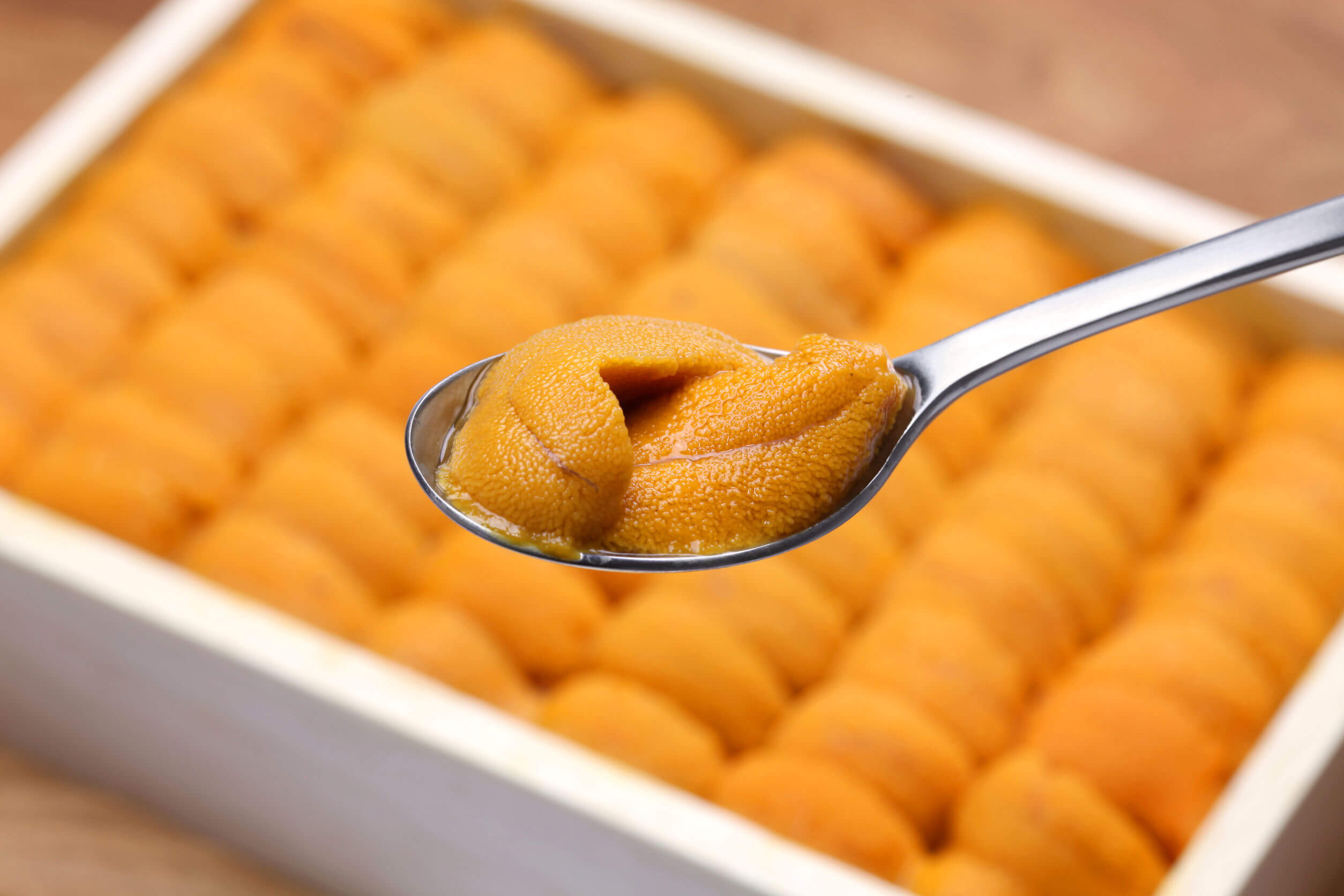
Referred to as uni (pronounced oo-ni), it can be eaten raw as sashimi and sushi, or made into uni butter and spread on toast. I find it an acquired taste – the texture is creamy like cheese but rich with sea taste. Unless you like raw foods, you can only eat it in small portions.
Maybe put this on your what NOT to eat in Japan list.
26. Shirako
There’s no glorifying what this dish is: it’s the sperm sacs of sea creatures. I haven’t personally tried it but a lot of people around me say it’s an expensive delicacy served at work parties and is widely loved by the Japanese.
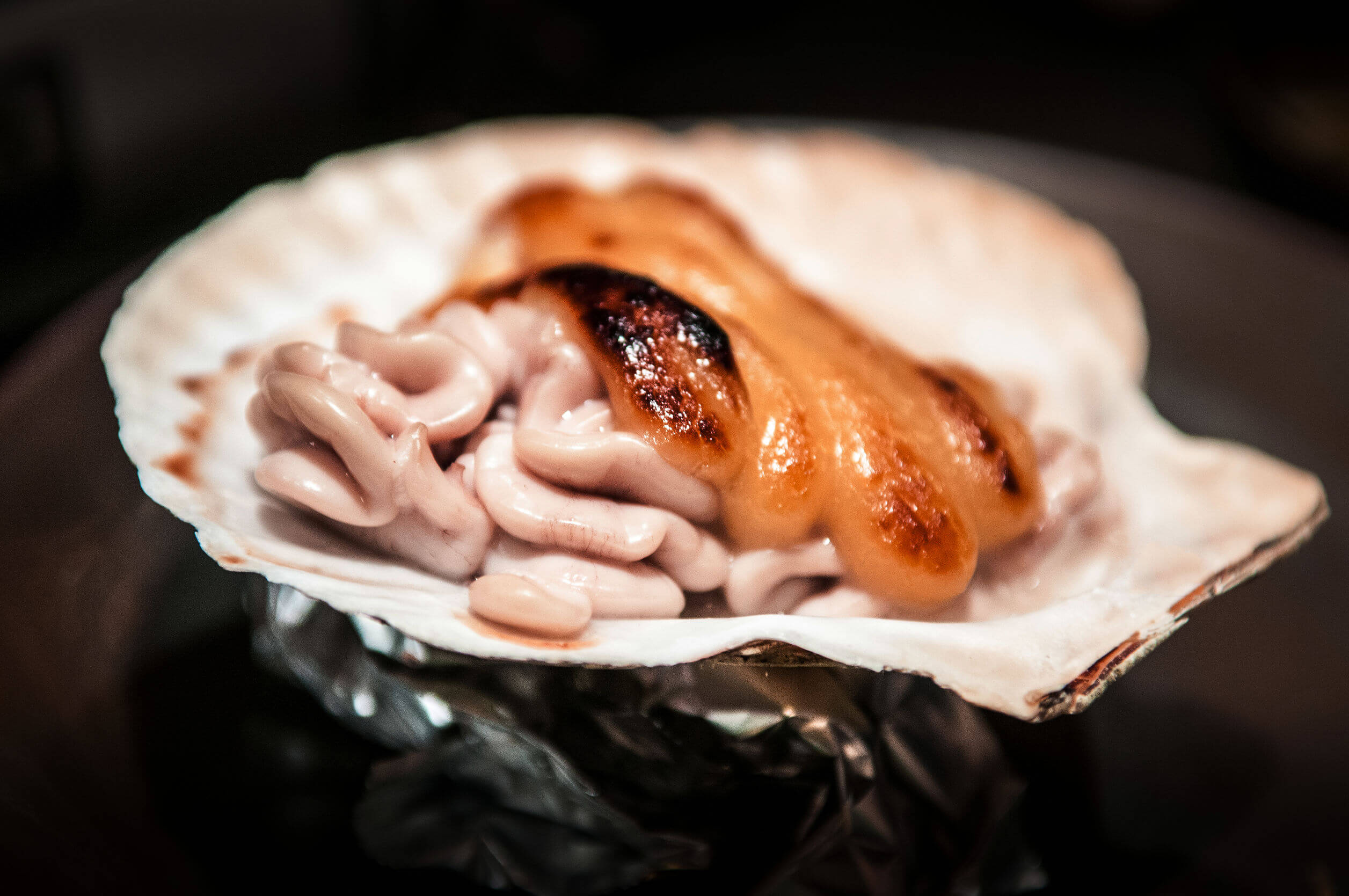
The texture is buttery and creamy, leaving you with a sea-scented after taste. Often served on sushi or made into tempura and hot pot batter, you may very well accidentally try it without realising what it is.
This definitely doesn’t appear on my best food in Japan list, but I just wanted to warn you about it. Let me know if it’s worth a try!
27. Horumon
You might think you’re saying ‘hormone’ but the word actually derives from ‘horu-mono’, meaning ‘things to throw away’. Literally cow and pig guts, this intestines dish is surprisingly popular among the Japanese.
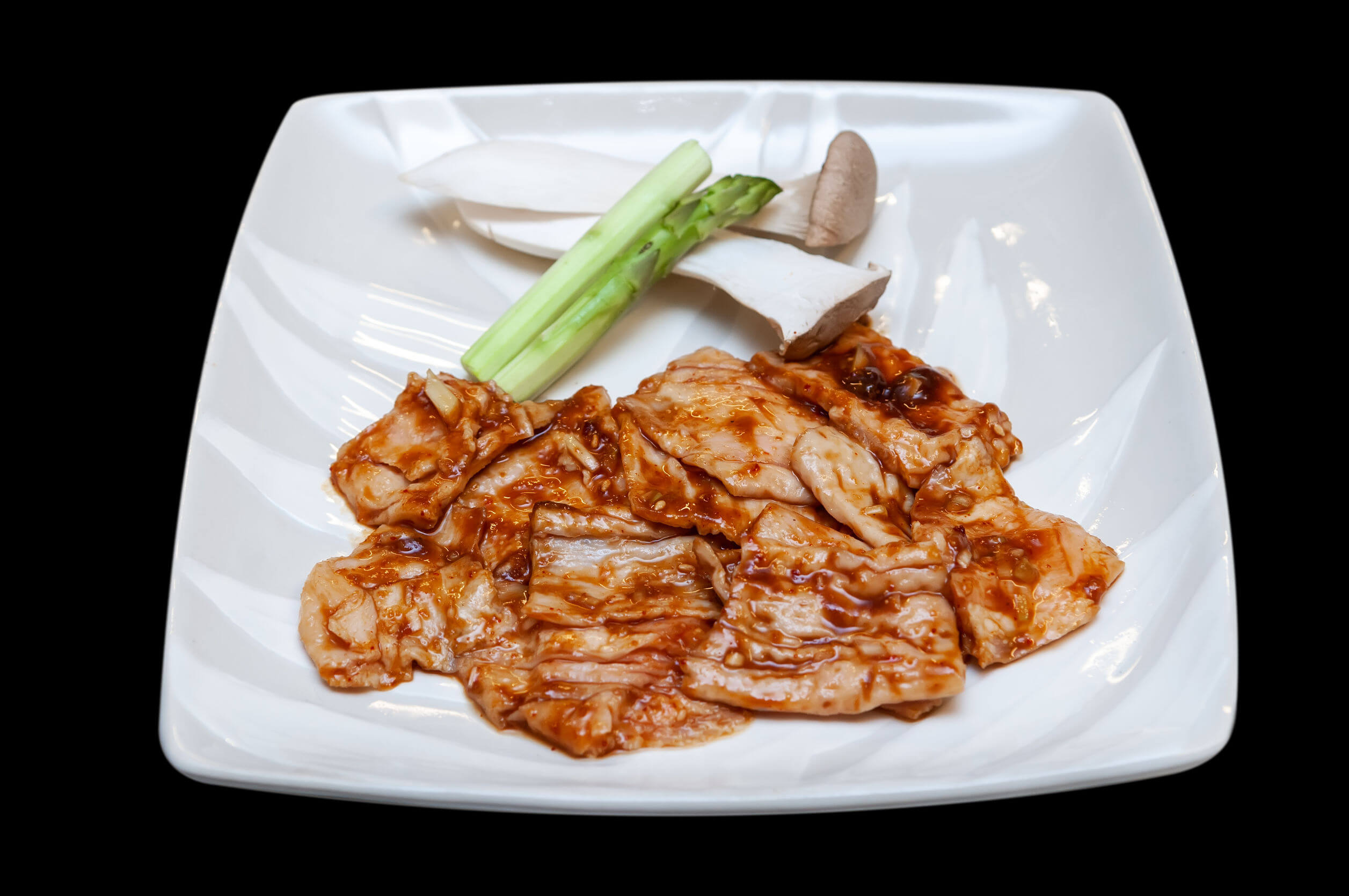
To combat the raw taste, Osaka has taken to grilling it alongside other meat; the chewy, tubular texture makes it a fun challenge. Kyushu however, chucks it into hot pot to flavor with garlic, leak and salty broth. Inexpensive and collagen-filled, it could be the next beauty breakthrough.
28. Nankotsu
Nankotsu is fascinating because when I first tried it, I actually thought it was cooked mistakenly. Turns out chicken cartilage appeals as balls of hard and crunchy bar food; these tiny bones were breaded and deep fried, topped with lemon juice and presented as a late-night specialty.
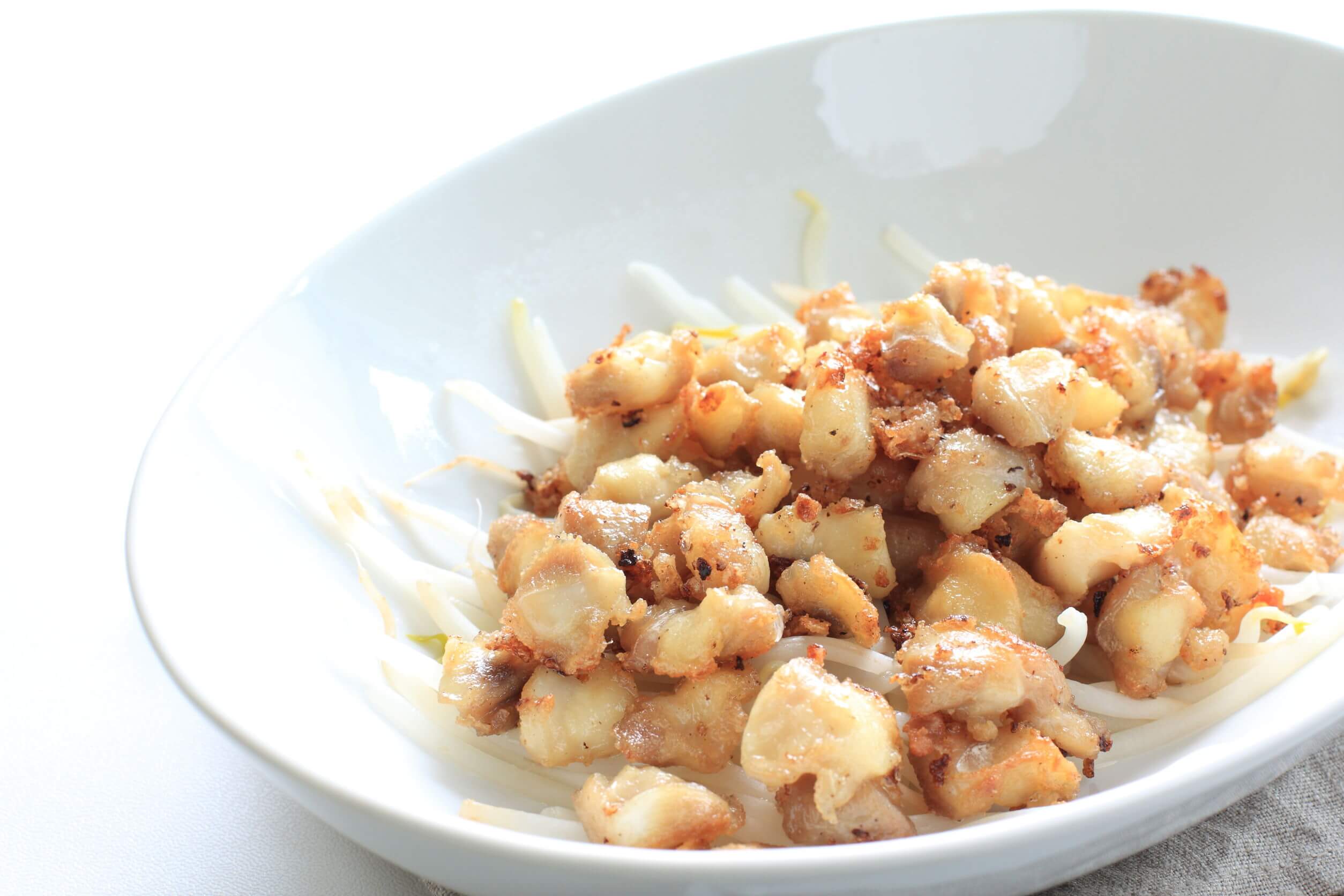
You can eat it yakitori style too, where it’s served on a skewer and grilled to your preference. In my opinion, the former method is best.
Maybe not one of the best foods in Japan – but, stick it on your list to avoid!
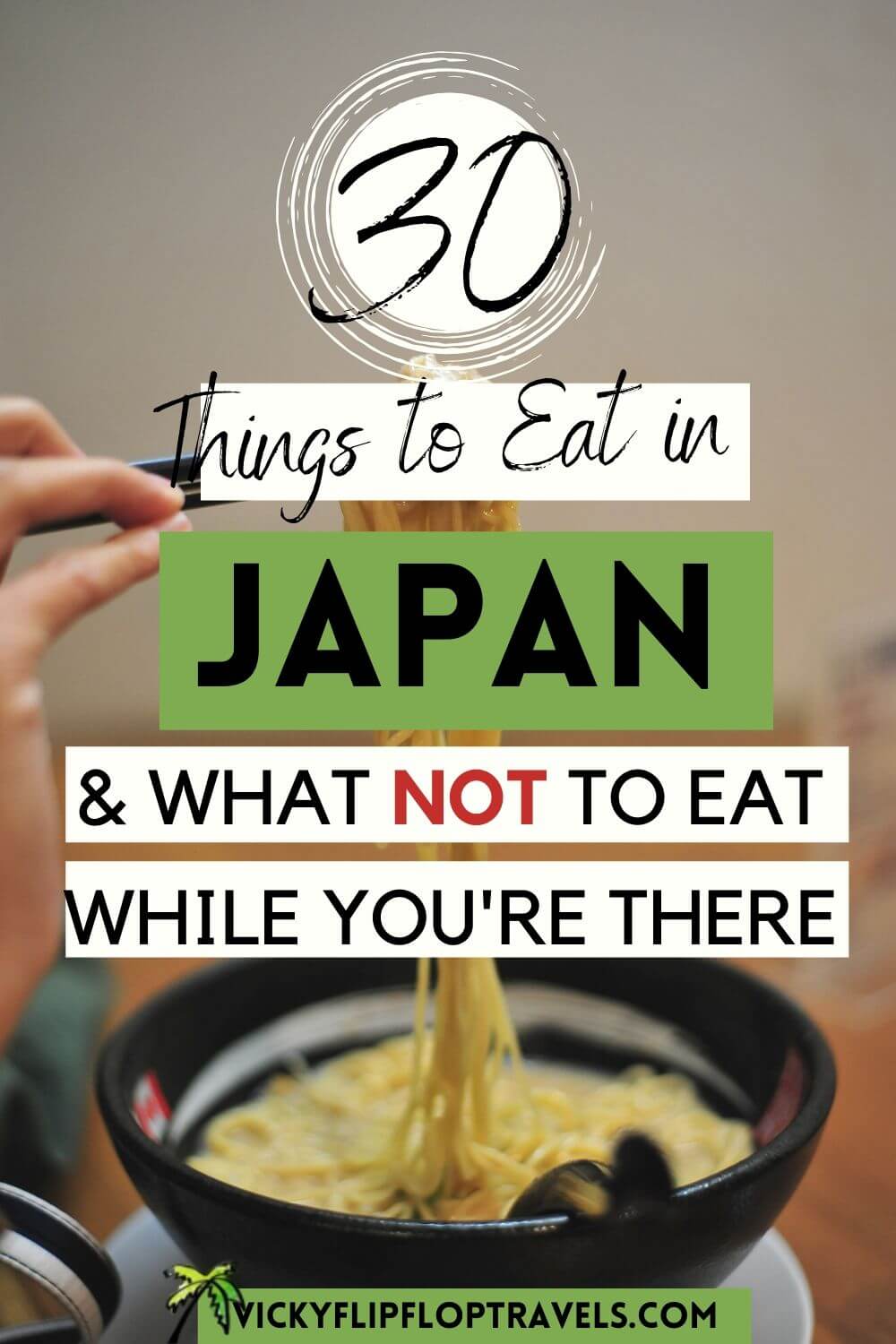
29. Monjayaki
While the dish itself isn’t so strange, the presentation leaves much to be desired. On the grill… it looks like a shapeless mass of runny batter. But it’s really good!
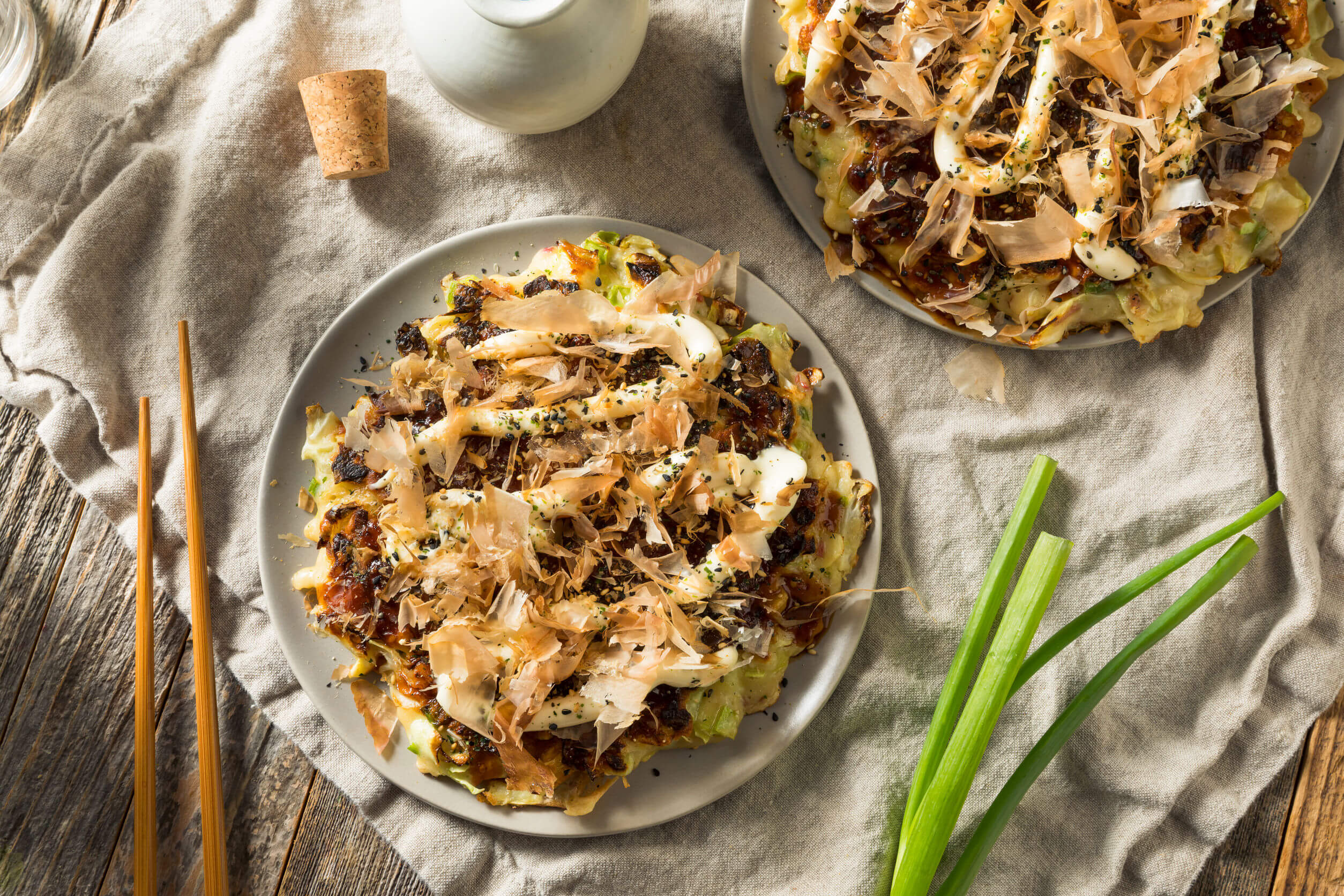
30. Fugu
Also known as puffer fish, fugu is one of the most dangerous and technically skilled dishes to prepare. Known to contain a toxin that paralyzes and lead to deaths, serving standards are extremely strict.
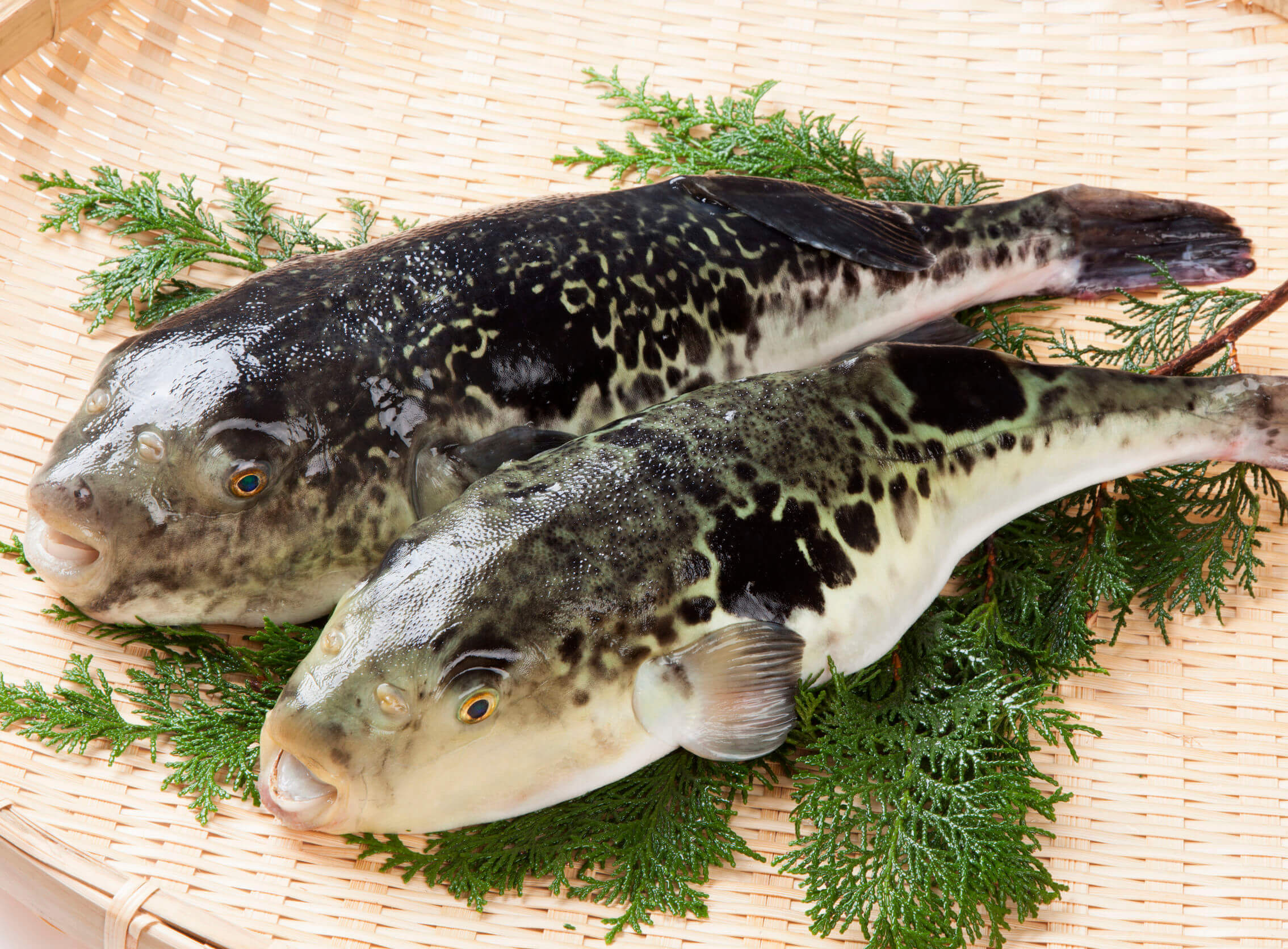
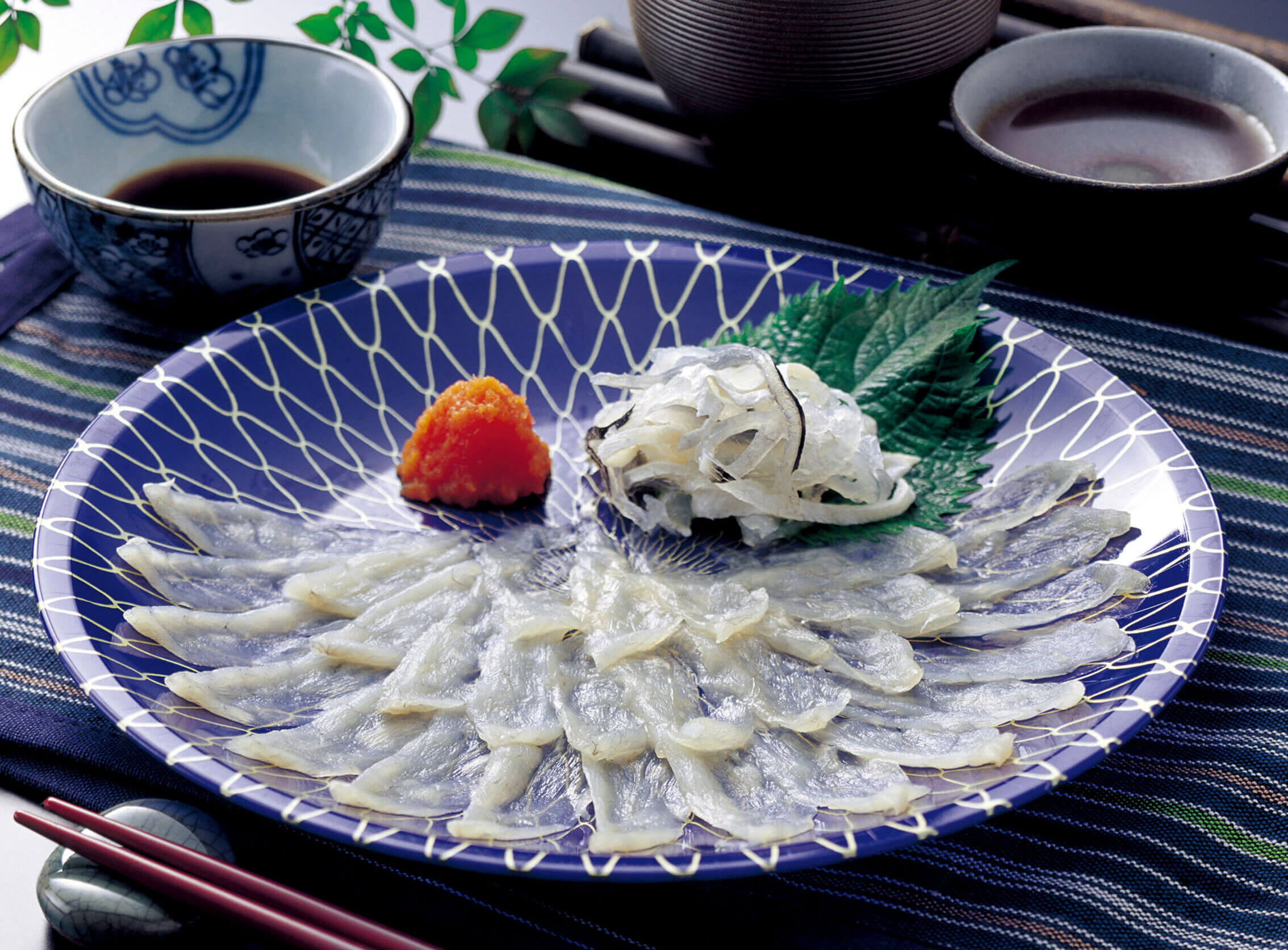
What amazed me is that chefs need to earn a license and do a 3 year apprenticeship before they can serve this dish; that’s how high risk this fish is! Still, if you visit a high-class restaurant that serves fugu, do give it a try.
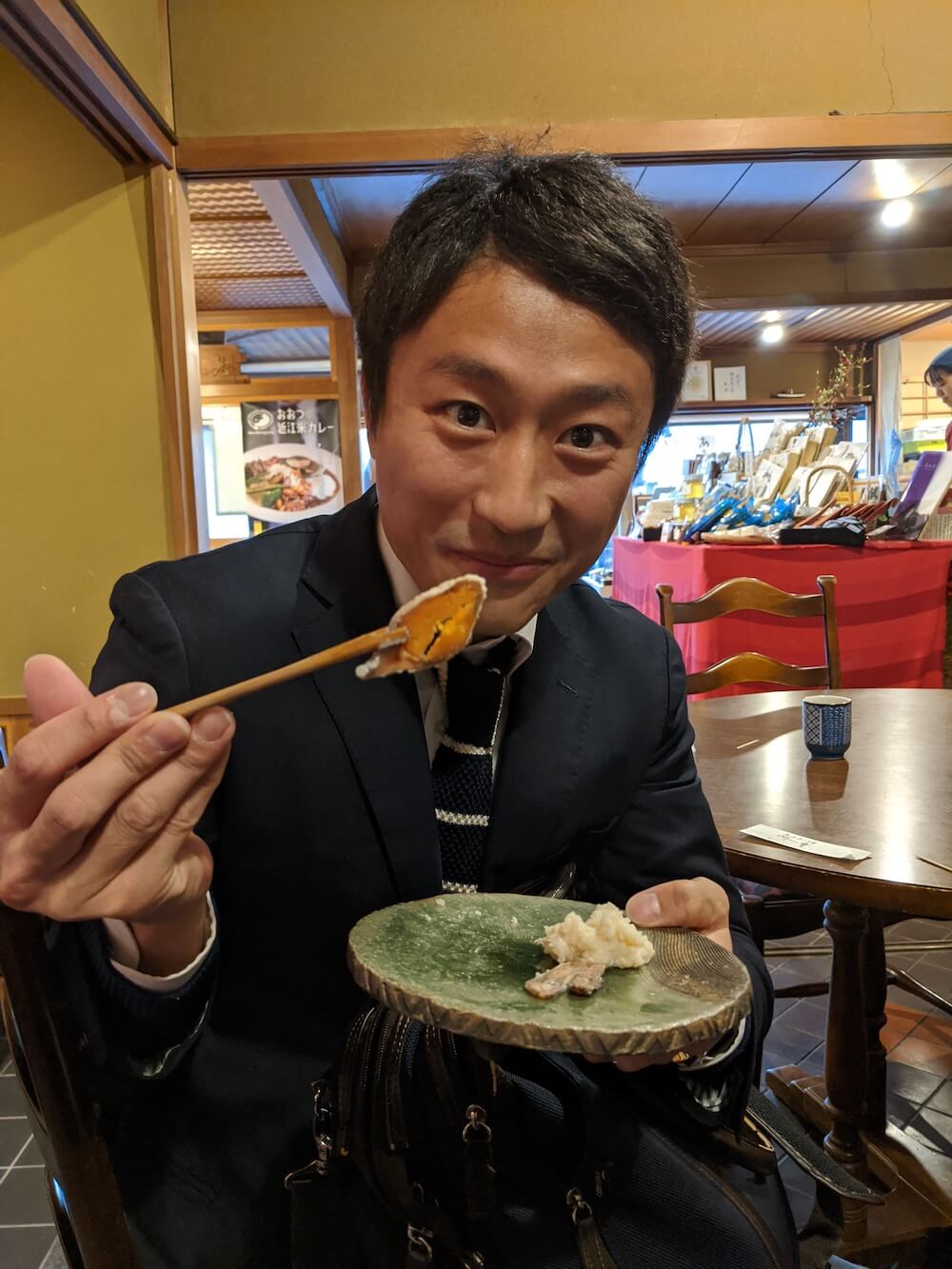
What do Japanese say before eating?
Before eating, Japanese say: Itadakimasu!
Japanese food etiquette
To quickly round off this Japan eats list, here are some tips on Japanese dining etiquette.
- To express gratefulness, Japanese people start off their meal by saying “Itadakimasu!” It translates to “I humbly receive”.
- Don’t play with your chopsticks; sticking them upright in rice is a rude imitation of funeral rites.
- Don’t blow your nose at the table.
- The louder you slurp, the better. Raise your bowl to mouth level to minimise any mess.
- Refill your tablemates’ tea or water if they’re above you on the social ladder.
- Cash is king when it comes to smaller establishments.
- Don’t tip – they pride themselves on quality service. Saying thank you goes a long way.
- Definitely choose family-run restaurants over fancy places; those generational recipes are magical.
Hope that gives you a better insight into the best food in Japan, and how to eat it.
If you think I’ve missed anything, let me know.
More on travel in Japan
The Best Day Trips from Kyoto
How to Travel from Tokyo to Osaka
52 Coolest Things to Do in Kyoto
